
I saw a lot of smiles at Midwest LSA Expo 2020. A common phrase was, “This is the biggest” — by which they meant only* — “airshow of the year. It’s even bigger than Oshkosh 2020.” As I’ve often repeated, Midwest has been social distancing since long before you heard of that phrase. I believe it to be a reasonably safe environment. However, a warning for those concerned about exposure: some hand shaking occurred (between consenting parties) and not everyone wore masks outside as they viewed the aircraft on display. I heard of two companies and one group specifically prevented from attending due to government mandates and other concerns at home. Similarly, my video-creating colleague, Videoman Dave, a Canadian national, was forbidden by U.S. border authorities from attending. His aviation business, which feeds his family, was judged non-essential. Longtime journalist Tim Kern — of 121five.com, an aviation news outlet — investigated why Rans Aircraft was unable to attend.


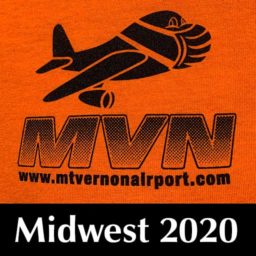 I saw a lot of smiles at
I saw a lot of smiles at  Longtime journalist Tim Kern — of
Longtime journalist Tim Kern — of 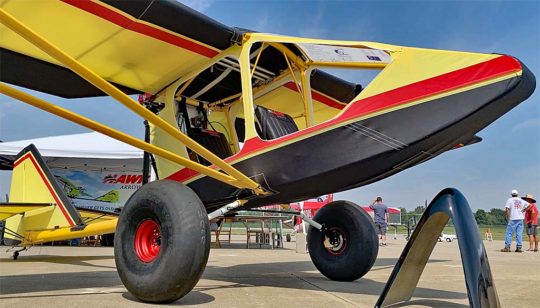 At Midwest 2020, I interviewed Joseph Shirley, boss of
At Midwest 2020, I interviewed Joseph Shirley, boss of 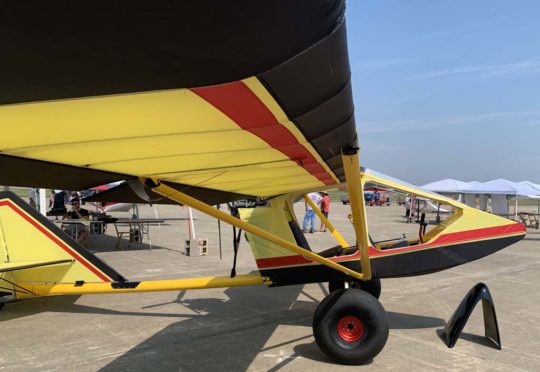 Joseph reported that his team has transferred all drawings, including some engineering drawings and other simple hand drawings from the old days, turning them into SolidWorks CAD drawings. This will help assure a higher state of quality to all parts and components but it also helps kit builders by providing major improvements to the build manual, a task most talented designers find to be one of the hardest parts of creating a kit aircraft.
Chuck Slusarczyk and I share a history in hang gliding days, back when we were both young and handsome. Regretfully, Chuck is in failing health these days but I believe he would be proud how well his design continues to do and he'd be impressed with how far people like Terry and Joseph have taken his once-modest but always-beloved Hawk.
Watch for more on Joseph Shirley's operation in an upcoming video.
Joseph reported that his team has transferred all drawings, including some engineering drawings and other simple hand drawings from the old days, turning them into SolidWorks CAD drawings. This will help assure a higher state of quality to all parts and components but it also helps kit builders by providing major improvements to the build manual, a task most talented designers find to be one of the hardest parts of creating a kit aircraft.
Chuck Slusarczyk and I share a history in hang gliding days, back when we were both young and handsome. Regretfully, Chuck is in failing health these days but I believe he would be proud how well his design continues to do and he'd be impressed with how far people like Terry and Joseph have taken his once-modest but always-beloved Hawk.
Watch for more on Joseph Shirley's operation in an upcoming video.
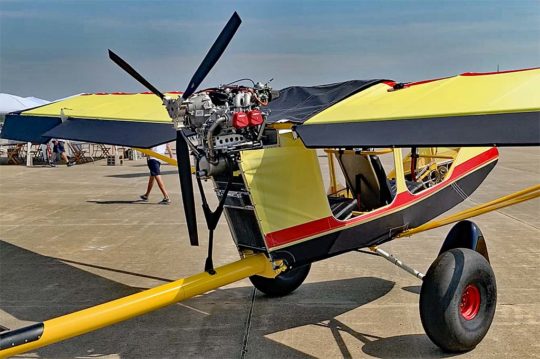 I never thought of Hawk as a bush aircraft. It's history as a simple ultralight from the early 1980s suggested it was a more fair weather flyer …not that there's anything wrong with that, of course.
The Hawk being created why Joseph and his troops gave a completely different vibe. If it was flying, I would have been sorely tempted to take this beefy-looking aircraft out to a creek bed to see how it handles an unimproved surface. Given its modest flight handling qualities, sturdy and proven construction, and its slow speed capabilities, I'm guessing Hawk Tundra would do especially well.
I never thought of Hawk as a bush aircraft. It's history as a simple ultralight from the early 1980s suggested it was a more fair weather flyer …not that there's anything wrong with that, of course.
The Hawk being created why Joseph and his troops gave a completely different vibe. If it was flying, I would have been sorely tempted to take this beefy-looking aircraft out to a creek bed to see how it handles an unimproved surface. Given its modest flight handling qualities, sturdy and proven construction, and its slow speed capabilities, I'm guessing Hawk Tundra would do especially well.
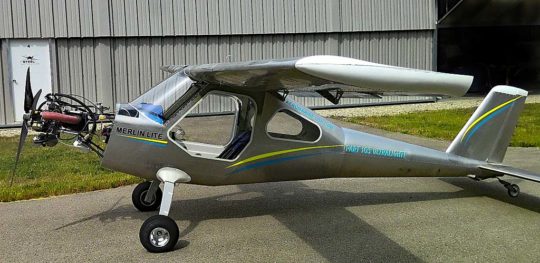 Are you looking for an affordably-priced airplane? On this website, you can find many choices of aircraft that qualify, with something to fit the budget of almost any pilot.
Using the Search bar at the top of the page, you can look for any text anywhere on this website. Have you tried it? More on this below…
Are you looking for an affordably-priced airplane? On this website, you can find many choices of aircraft that qualify, with something to fit the budget of almost any pilot.
Using the Search bar at the top of the page, you can look for any text anywhere on this website. Have you tried it? More on this below…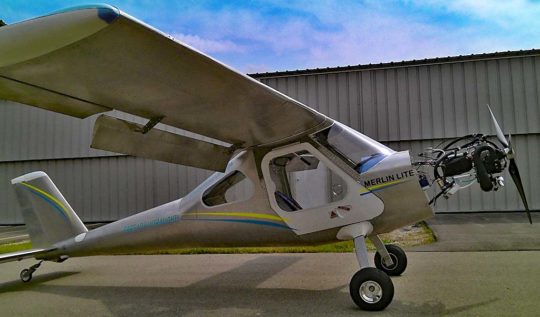 However, such "alternative aircraft" may not be what you had in mind. Many are open cockpit and pilots trained in a Cessna or Piper can feel uneasy being out in the open (even if behind a pod and windscreen). Also, weight shift trikes, powered parachutes, or gyroplanes handle differently from stick (or yoke) and rudder.
Other pilots may want an aircraft that can cope with the elements better. Metal can offer better endurance.
However, such "alternative aircraft" may not be what you had in mind. Many are open cockpit and pilots trained in a Cessna or Piper can feel uneasy being out in the open (even if behind a pod and windscreen). Also, weight shift trikes, powered parachutes, or gyroplanes handle differently from stick (or yoke) and rudder.
Other pilots may want an aircraft that can cope with the elements better. Metal can offer better endurance. 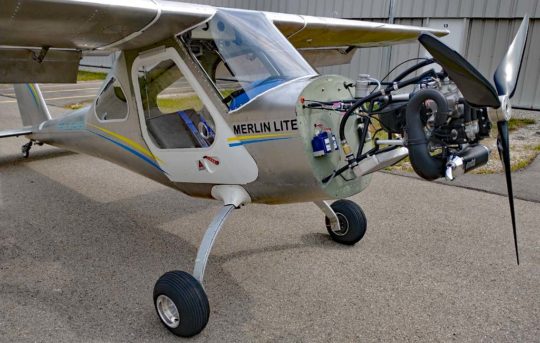 Chip believes his new Part 103 "magic" ultralight is truly revolutionary.
“This is not your 1980s ultralight," claimed designer Chip. “I know, I was there. Our new Merlin Lite has real aircraft features and appeal: seven windows, a cockpit door, decent baggage capacity and space, an instrument panel with an EFIS and GPS. And the list goes on.”
Merlin Lite is available with either tricycle gear or taildragger, Chip reported, and features all-aluminum construction, dual independent hydraulic brakes, tundra tires, five-position flaps, pushrod controls with bearings, and substantial aft cabin area with the CG envelope to use it. "Deep deploying 50-degree Fowler flaps and tundra tires with independent dual brakes make the Merlin Lite an ultralight bush plane," he added.
Chip believes his new Part 103 "magic" ultralight is truly revolutionary.
“This is not your 1980s ultralight," claimed designer Chip. “I know, I was there. Our new Merlin Lite has real aircraft features and appeal: seven windows, a cockpit door, decent baggage capacity and space, an instrument panel with an EFIS and GPS. And the list goes on.”
Merlin Lite is available with either tricycle gear or taildragger, Chip reported, and features all-aluminum construction, dual independent hydraulic brakes, tundra tires, five-position flaps, pushrod controls with bearings, and substantial aft cabin area with the CG envelope to use it. "Deep deploying 50-degree Fowler flaps and tundra tires with independent dual brakes make the Merlin Lite an ultralight bush plane," he added.
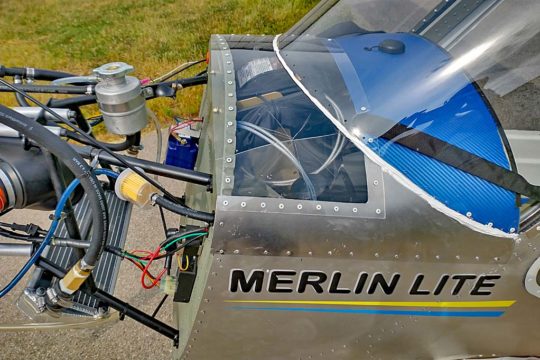 "Based on Merlin PSA, a popular single seat personal sport aircraft that costs less than $40,000 and cruises at 120 mph, Merlin Lite's cockpit is almost as large as the Merlin's, but the powerplant is scaled down and the 3-D tapered wing aspect ratio is increased," said Chip.
Merlin Lite is available completed and ready to fly away, or can also be built as an Experimental and flown with a Sport Pilot ticket, or even a glider certificate, flying Merlin Lite as a motorglider.
"Its cantilevered high wing means no lift strut," explained Chip, "making Merlin Lite quite easy to get in and out, a feature with increasing importance. Plus, the large baggage area can carry a full-size airline roll-on bag, camping gear, or even your favorite pet."
"Based on Merlin PSA, a popular single seat personal sport aircraft that costs less than $40,000 and cruises at 120 mph, Merlin Lite's cockpit is almost as large as the Merlin's, but the powerplant is scaled down and the 3-D tapered wing aspect ratio is increased," said Chip.
Merlin Lite is available completed and ready to fly away, or can also be built as an Experimental and flown with a Sport Pilot ticket, or even a glider certificate, flying Merlin Lite as a motorglider.
"Its cantilevered high wing means no lift strut," explained Chip, "making Merlin Lite quite easy to get in and out, a feature with increasing importance. Plus, the large baggage area can carry a full-size airline roll-on bag, camping gear, or even your favorite pet."
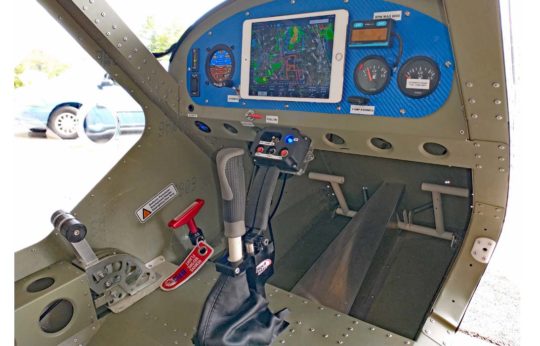
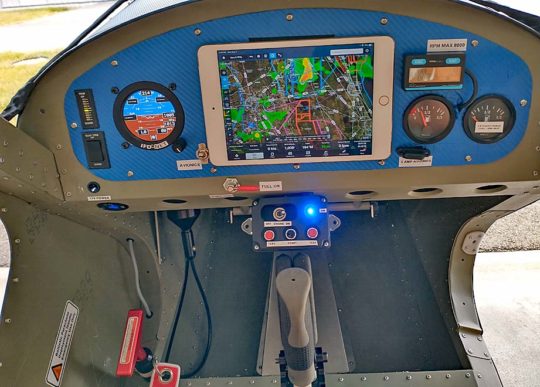 Merlin Lite finished and ready-to-fly — $31,000 equipped with electric-starting
Merlin Lite finished and ready-to-fly — $31,000 equipped with electric-starting 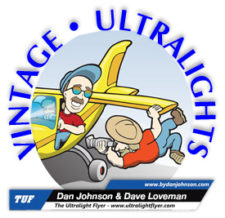 To find truly affordable aircraft, for one example, search for "vintage ultralights" you will be lead to our April 2020 series on ten super-affordable airplanes, all of which are available second hand for less than $10,000. You may not know that Search can be more specific. After you use Search, a page shows you whatever is found but you can drill down further — click "Try our advanced search option."
After your initial search, you will see, "Not finding exactly what you expected? Try our advanced search option." Click on the "Try our advanced search option" link and you can narrow the search to: 1️⃣ specific brands of aircraft manufacturers, 2️⃣ specific aircraft models, or 3️⃣ FI.R.M. List companies, meaning products and services that do not make airframes or engines. This Advanced Search is quite powerful to sift through more than two million words or hundreds of different aircraft reported on ByDanJohnson.com.
To find truly affordable aircraft, for one example, search for "vintage ultralights" you will be lead to our April 2020 series on ten super-affordable airplanes, all of which are available second hand for less than $10,000. You may not know that Search can be more specific. After you use Search, a page shows you whatever is found but you can drill down further — click "Try our advanced search option."
After your initial search, you will see, "Not finding exactly what you expected? Try our advanced search option." Click on the "Try our advanced search option" link and you can narrow the search to: 1️⃣ specific brands of aircraft manufacturers, 2️⃣ specific aircraft models, or 3️⃣ FI.R.M. List companies, meaning products and services that do not make airframes or engines. This Advanced Search is quite powerful to sift through more than two million words or hundreds of different aircraft reported on ByDanJohnson.com.
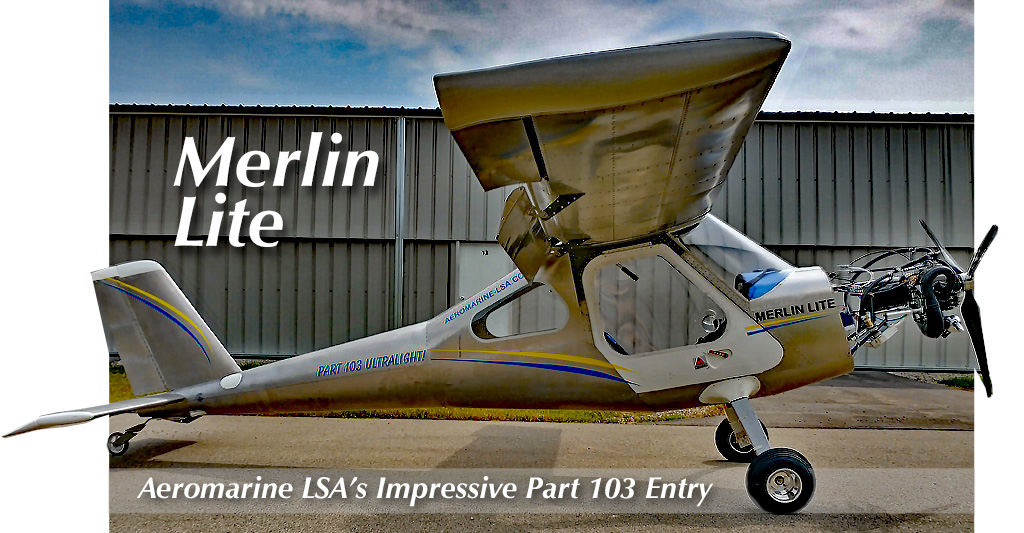
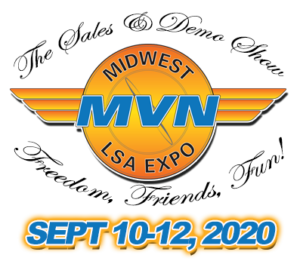 I hope you can attend 2020's
I hope you can attend 2020's 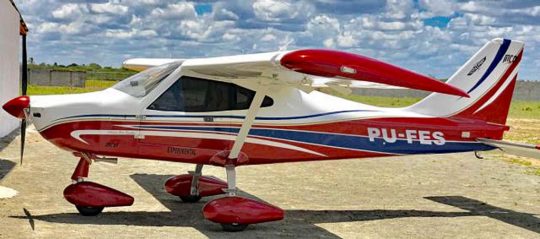 MC-01 by Montaer
MC-01 by Montaer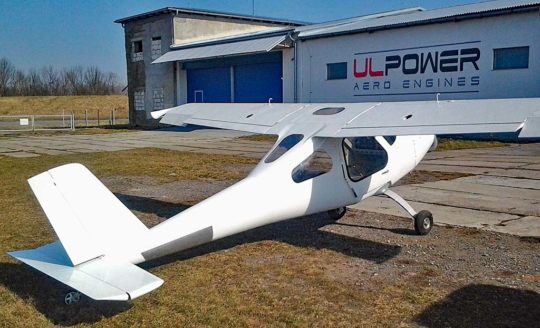
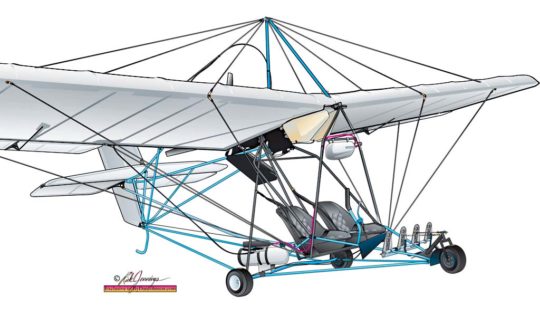 SmithSilver by Tri-State Kite
SmithSilver by Tri-State Kite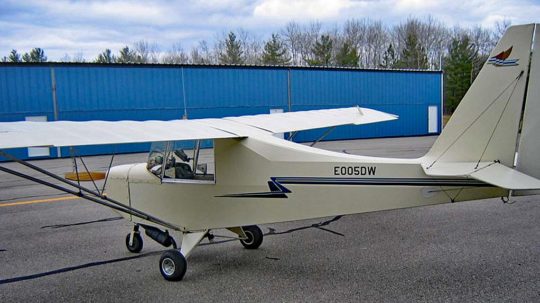 Sparrow by Carlson
Sparrow by Carlson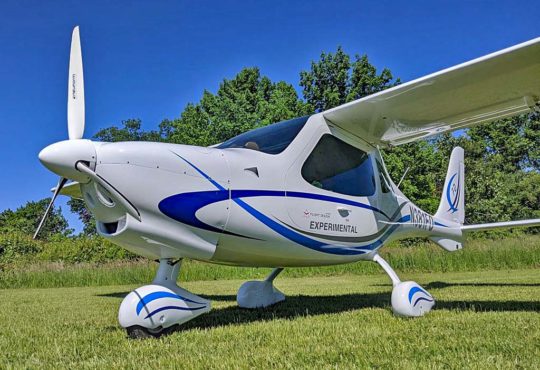 F2 by Flight Design
F2 by Flight Design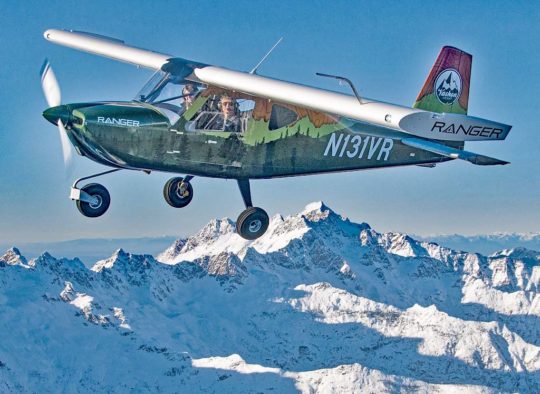 Vashon Ranger
Vashon Ranger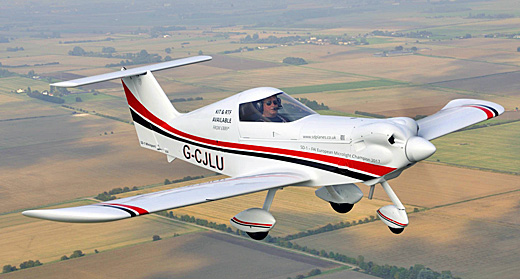
 VL3 by JMB Aircraft
VL3 by JMB Aircraft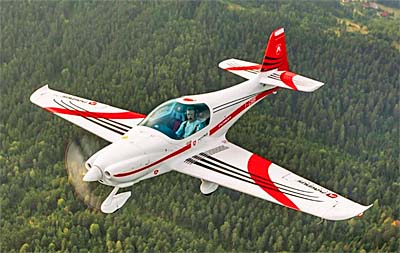 Fusion 212 by Magnus
Fusion 212 by Magnus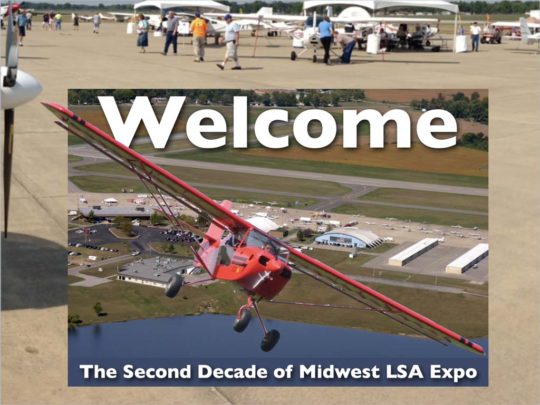 Rob Rollison the proprietor of the very successful
Rob Rollison the proprietor of the very successful 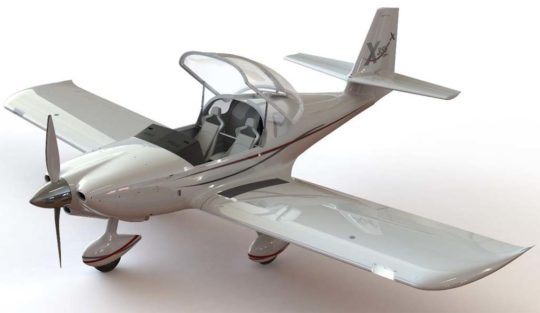 Deon will have the InnovAviation FX1 we saw at Midwest 2019 (
Deon will have the InnovAviation FX1 we saw at Midwest 2019 (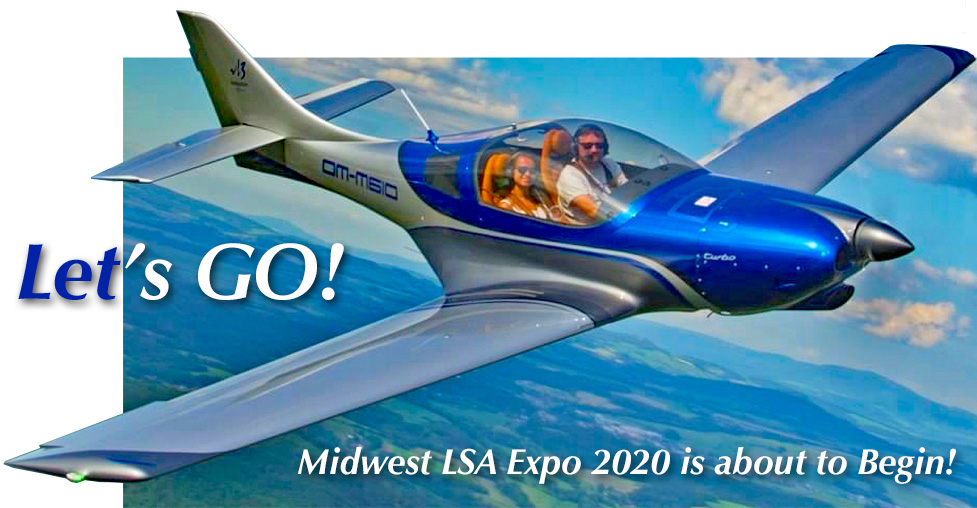
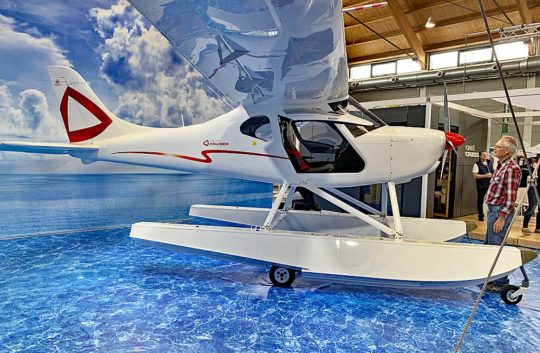 Some of you may feel the same, I suspect. I don't suggest you need to go to them all, but if people who do what I do don't have airshows to attend, you get less cool news about great aircraft and flight gear.
That said, I've been able to keep a good flow of recreational aviation news that you readers find interesting. April 2020 set an all-time record. That was eclipsed in July 2020 and August kept the growth going to another record. While pleased about the increasing number of visitors — and while everyone being isolated probably drove more pilots to this website — it nonetheless illustrates the value of journalists attending shows and bringing you the latest and greatest.
Some of you may feel the same, I suspect. I don't suggest you need to go to them all, but if people who do what I do don't have airshows to attend, you get less cool news about great aircraft and flight gear.
That said, I've been able to keep a good flow of recreational aviation news that you readers find interesting. April 2020 set an all-time record. That was eclipsed in July 2020 and August kept the growth going to another record. While pleased about the increasing number of visitors — and while everyone being isolated probably drove more pilots to this website — it nonetheless illustrates the value of journalists attending shows and bringing you the latest and greatest.
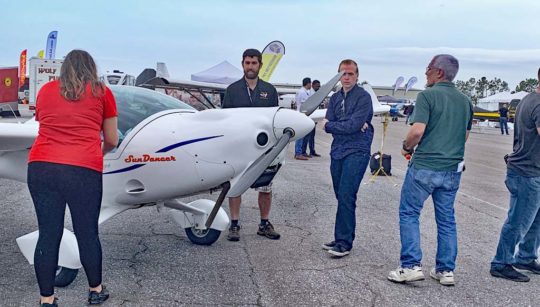 I think these shows setting dates in the new year is a great and wonderful thing.
First up is the recently-rescheduled
I think these shows setting dates in the new year is a great and wonderful thing.
First up is the recently-rescheduled 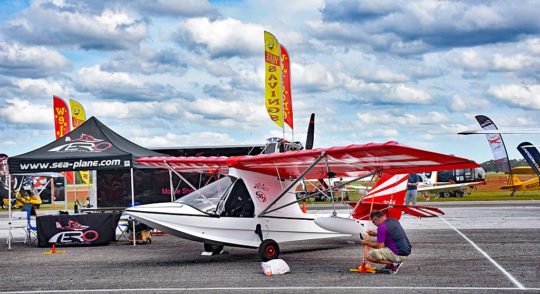 “We are now happy to confirm January 28-30, 2021 as the new event date for the fifth annual DeLand Sport Aviation Showcase,” Jana added. Most readers will recall the 15-year-old Sebring Expo used similar January dates. That event ended after the
“We are now happy to confirm January 28-30, 2021 as the new event date for the fifth annual DeLand Sport Aviation Showcase,” Jana added. Most readers will recall the 15-year-old Sebring Expo used similar January dates. That event ended after the 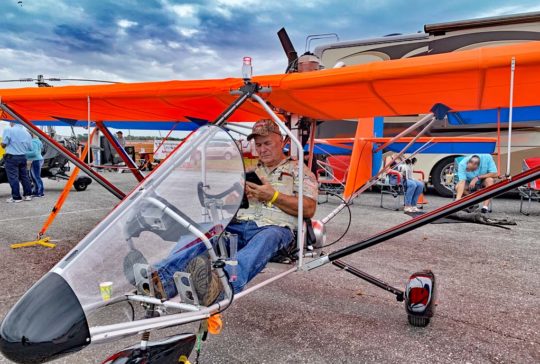 Yes, after having to cancel Aero 2020 and
Yes, after having to cancel Aero 2020 and 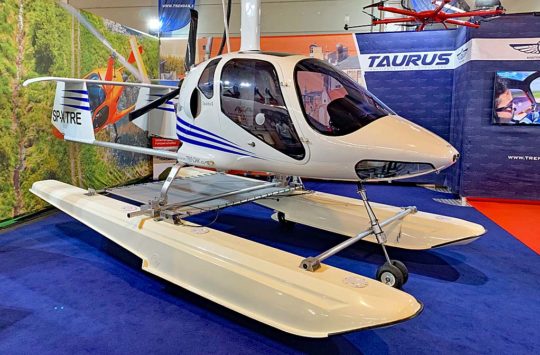 Yes, the new Aero dates are April 21-24, 2021. Whew! With Sun 'n Fun slated for April 13-18, 2021, that gives a couple days of breathing room between these two important events …time to pack new clothes, clean photos off my devices, and repack for Europe. What a relief!
I am so excited and pleased, I almost don't know what to say, except… "Thank you, thank you, thank you, Roland and team."
This change assures the month of April 2021 may set an even higher record of visitors and I will be furiously gathering news and video for many stories from these two events. Especially after the dry desert of 2020, my expectation is that both Sun 'n Fun and Aero will be enthusiastically welcomed and that aircraft developers will be out in force with their newest and coolest flying machines.
Yes, the new Aero dates are April 21-24, 2021. Whew! With Sun 'n Fun slated for April 13-18, 2021, that gives a couple days of breathing room between these two important events …time to pack new clothes, clean photos off my devices, and repack for Europe. What a relief!
I am so excited and pleased, I almost don't know what to say, except… "Thank you, thank you, thank you, Roland and team."
This change assures the month of April 2021 may set an even higher record of visitors and I will be furiously gathering news and video for many stories from these two events. Especially after the dry desert of 2020, my expectation is that both Sun 'n Fun and Aero will be enthusiastically welcomed and that aircraft developers will be out in force with their newest and coolest flying machines.
 While I'm ecstatic about the Sun 'n Fun and Aero 2021 timing, in only a few more days, I leave for Mt. Vernon, Illinois, home to the
While I'm ecstatic about the Sun 'n Fun and Aero 2021 timing, in only a few more days, I leave for Mt. Vernon, Illinois, home to the 
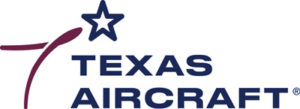 I always enjoy when a new airplane company arrives on the market and sets plans in motion to expand and improve their flying machine. Texas Aircraft and their Colt 100 Light-Sport Aircraft is one such company.
Lead by the energetic and ambitious Matheus Grande,
I always enjoy when a new airplane company arrives on the market and sets plans in motion to expand and improve their flying machine. Texas Aircraft and their Colt 100 Light-Sport Aircraft is one such company.
Lead by the energetic and ambitious Matheus Grande, 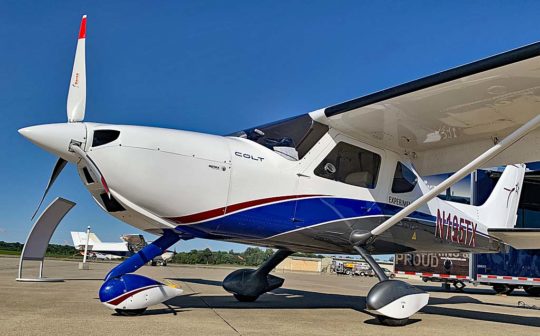 Rather than repeat what
Rather than repeat what 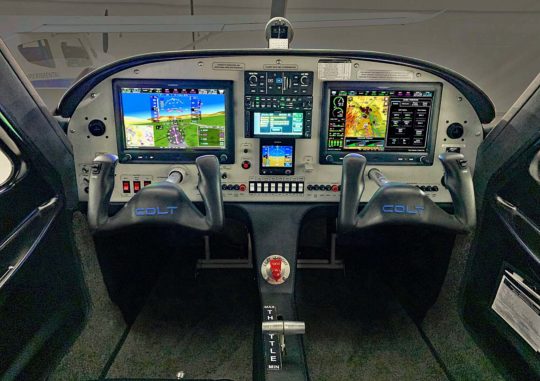 Texas Aircraft announced, "The addition of the
Texas Aircraft announced, "The addition of the 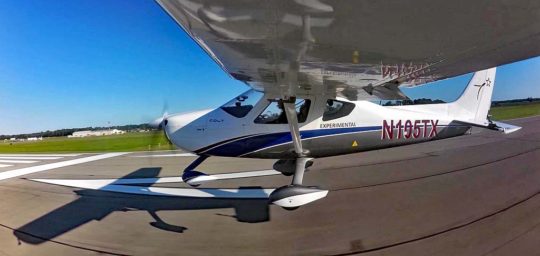 Scott explained that while the Colt’s standard Dynon avionics package is TAA compliant and amazing for flight training, "flight schools are asking for Garmin." Providing Garmin equipment can help reduce the time and cost associated with training students on multiple avionics systems as they progress.
“Today’s students want to train on the same avionics they will be using later as they advance into more complex Garmin-equipped aircraft,” Scott said. “The wide variety of Garmin avionics that we will make available for the Colt will give flight schools and private owners a great deal of flexibility in how their avionics are configured.”
Scott explained that while the Colt’s standard Dynon avionics package is TAA compliant and amazing for flight training, "flight schools are asking for Garmin." Providing Garmin equipment can help reduce the time and cost associated with training students on multiple avionics systems as they progress.
“Today’s students want to train on the same avionics they will be using later as they advance into more complex Garmin-equipped aircraft,” Scott said. “The wide variety of Garmin avionics that we will make available for the Colt will give flight schools and private owners a great deal of flexibility in how their avionics are configured.”
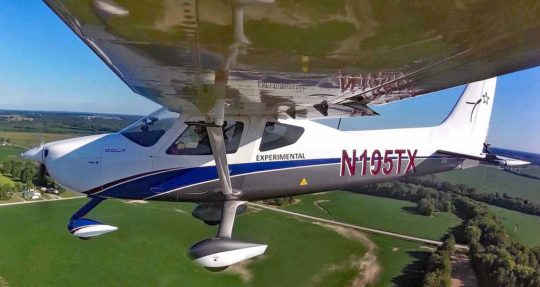 “We are now offering Garmin-equipped Colt aircraft with the basic VFR package starting at $139,000," said Scott. The fully-equipped, “Heavy IFR” Garmin package is priced starting at $170,500 (see below).
“So, whether you want a sleek single-display Garmin G3X Touch panel or dual G3X Touch instruments for a truly impressive digital screen experience, we offer choices,” Scott said. “All Garmin-equipped IFR-capable Colts come standard with a G5 backup. We are extremely excited to be able to offer Garmin’s popular line of avionics in our new-generation Colt.”
“We are now offering Garmin-equipped Colt aircraft with the basic VFR package starting at $139,000," said Scott. The fully-equipped, “Heavy IFR” Garmin package is priced starting at $170,500 (see below).
“So, whether you want a sleek single-display Garmin G3X Touch panel or dual G3X Touch instruments for a truly impressive digital screen experience, we offer choices,” Scott said. “All Garmin-equipped IFR-capable Colts come standard with a G5 backup. We are extremely excited to be able to offer Garmin’s popular line of avionics in our new-generation Colt.”
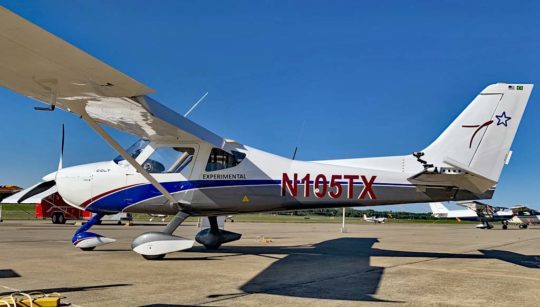 Almost everyone knows at least some facts about batteries. Everything we carry around these days seems battery powered and all of us are ever in search of an electric outlet to get more charge. Until battery energy density takes a substantial leap forward, electric airplanes have some clear limitations. Yet primary flight instruction — at least done in the pattern within easy reach of landing back on the field — is one early potential for electric powered LSA.
However, not all batteries are identical. — The British Lithium-Sulfur (Li-S) battery technology company, Oxis Energy and Texas Aircraft Manufacturing are developing an electric power system for Colt and initially, Oxis projects that the flight time will be in excess of two hours and an approximate range of 200 nautical miles. While still short of true cross country flying, this sounds encouraging.
Almost everyone knows at least some facts about batteries. Everything we carry around these days seems battery powered and all of us are ever in search of an electric outlet to get more charge. Until battery energy density takes a substantial leap forward, electric airplanes have some clear limitations. Yet primary flight instruction — at least done in the pattern within easy reach of landing back on the field — is one early potential for electric powered LSA.
However, not all batteries are identical. — The British Lithium-Sulfur (Li-S) battery technology company, Oxis Energy and Texas Aircraft Manufacturing are developing an electric power system for Colt and initially, Oxis projects that the flight time will be in excess of two hours and an approximate range of 200 nautical miles. While still short of true cross country flying, this sounds encouraging.
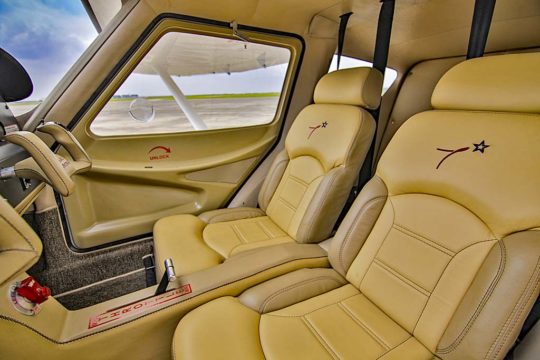 Huw Hampson-Jones, CEO of Oxis Energy, said, “Oxis Li-S technology offers significant benefits to aviation. The use of sulfur as a non-conductive material provides enhanced safety and is superior to current Lithium-Ion technology. Our 90kWh battery system is 40% lighter than current Li-Ion technology and will be powered by its 'High Power' cell at 400Wh/kg."
Oxis is involved in the design, development and now the move towards commercial production of Lithium Sulfur cells for battery systems. Oxis manufactures and produces all aspects and components in the making of the Li-S cell and does not use any toxic or rare earth material in the composition of its Lithium Sulfur cell technology. Oxis has been granted 193 patents with 115 pending.
Texas Aircraft's Matheus added, "Our eColt, manufactured at our factory in Texas, will use Li-S battery cells made at the Oxis factory. The powertrain will be supplied by WEG and the battery and its management system (BMS) will be provided by Akaer Group of São José dos Campos, Brazil." (Note that while Texas Aircraft is an all-American company, Matheus and his team hail from Brazil so they have many connections in that southern hemisphere country.)
"This project is in early stage," said Matheus. "We are not changing the Colt, but we are studying the possibility to add some battery packs under the plane (maybe looking like a Cessna Caravan cargo) but this is still under discussion since we are also evaluating adding the battery packs into the wings."
Huw Hampson-Jones, CEO of Oxis Energy, said, “Oxis Li-S technology offers significant benefits to aviation. The use of sulfur as a non-conductive material provides enhanced safety and is superior to current Lithium-Ion technology. Our 90kWh battery system is 40% lighter than current Li-Ion technology and will be powered by its 'High Power' cell at 400Wh/kg."
Oxis is involved in the design, development and now the move towards commercial production of Lithium Sulfur cells for battery systems. Oxis manufactures and produces all aspects and components in the making of the Li-S cell and does not use any toxic or rare earth material in the composition of its Lithium Sulfur cell technology. Oxis has been granted 193 patents with 115 pending.
Texas Aircraft's Matheus added, "Our eColt, manufactured at our factory in Texas, will use Li-S battery cells made at the Oxis factory. The powertrain will be supplied by WEG and the battery and its management system (BMS) will be provided by Akaer Group of São José dos Campos, Brazil." (Note that while Texas Aircraft is an all-American company, Matheus and his team hail from Brazil so they have many connections in that southern hemisphere country.)
"This project is in early stage," said Matheus. "We are not changing the Colt, but we are studying the possibility to add some battery packs under the plane (maybe looking like a Cessna Caravan cargo) but this is still under discussion since we are also evaluating adding the battery packs into the wings."
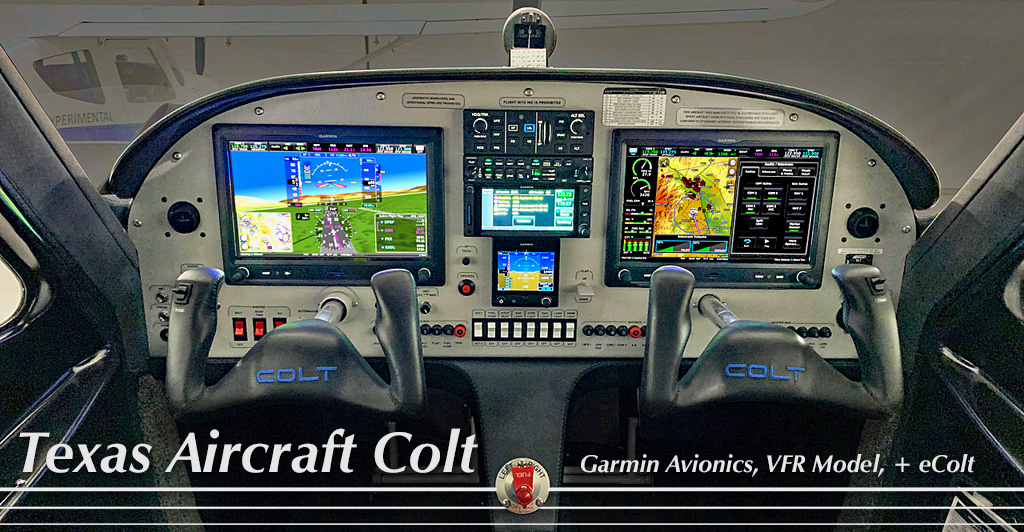
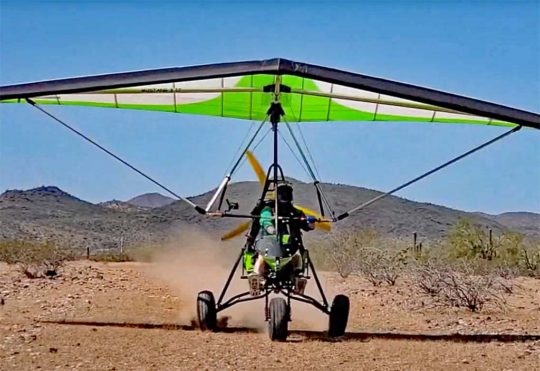 Denny has an enviable position to some. Imagine any fixed wing instructor saying, "I wish the aircraft would do some operations differently for my teaching. I can't find one that exactly matches what I seek, so, you know what? I'll just design what I want."
Yeah, sure. Most of us never have that chance. Instead, we learn to adapt to the aircraft. As an example, what if you wanted the throttle in a different place, or any number of possible changes.
In a long career that has included talking to CFIs from around the world, I have never met a fixed wing flight instructor who set about making the airplane he truly wanted. Denny Reed decided precisely that. Then he went and did it.
Denny has an enviable position to some. Imagine any fixed wing instructor saying, "I wish the aircraft would do some operations differently for my teaching. I can't find one that exactly matches what I seek, so, you know what? I'll just design what I want."
Yeah, sure. Most of us never have that chance. Instead, we learn to adapt to the aircraft. As an example, what if you wanted the throttle in a different place, or any number of possible changes.
In a long career that has included talking to CFIs from around the world, I have never met a fixed wing flight instructor who set about making the airplane he truly wanted. Denny Reed decided precisely that. Then he went and did it.
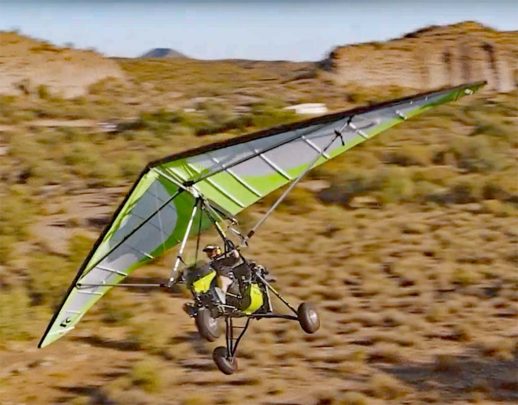 To make the airplane fit the terrain Denny wanted to access — creek beds, desert landscapes, mountainous terrain and more — he knew he needed a very durable, strong, and well-performing trike.
When I think of trikes, I think of
To make the airplane fit the terrain Denny wanted to access — creek beds, desert landscapes, mountainous terrain and more — he knew he needed a very durable, strong, and well-performing trike.
When I think of trikes, I think of 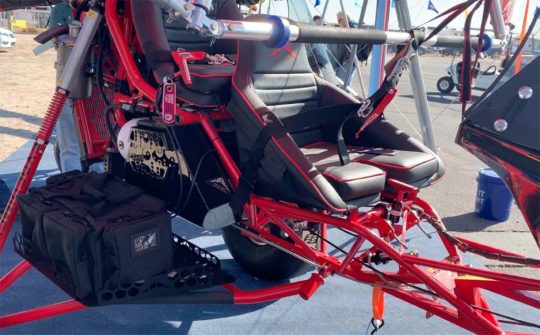 "When you chase strength and when you chase simple, you get ugly," observed philosophical trike designer Denny Reed with a smile on his face. "When we first showed it, I was real proud of it but one of the first comments we got was, 'It looks like a post-war Russian tractor.'" Denny laughed aloud as he related the story.
That's why Goat looks as it does. If it seems a riot of tubes going every which way, consider the thought Denny put into it.
"Every notch, every cut, every bend, every tig weld seems like it has a story," he said while not ignoring the wisdom of and guidance from other aviation designers, "We nonetheless wanted something that said off-road, crawler, racing."
After a few iterations, he was happy and production began. Customers were waiting.
"When you chase strength and when you chase simple, you get ugly," observed philosophical trike designer Denny Reed with a smile on his face. "When we first showed it, I was real proud of it but one of the first comments we got was, 'It looks like a post-war Russian tractor.'" Denny laughed aloud as he related the story.
That's why Goat looks as it does. If it seems a riot of tubes going every which way, consider the thought Denny put into it.
"Every notch, every cut, every bend, every tig weld seems like it has a story," he said while not ignoring the wisdom of and guidance from other aviation designers, "We nonetheless wanted something that said off-road, crawler, racing."
After a few iterations, he was happy and production began. Customers were waiting.
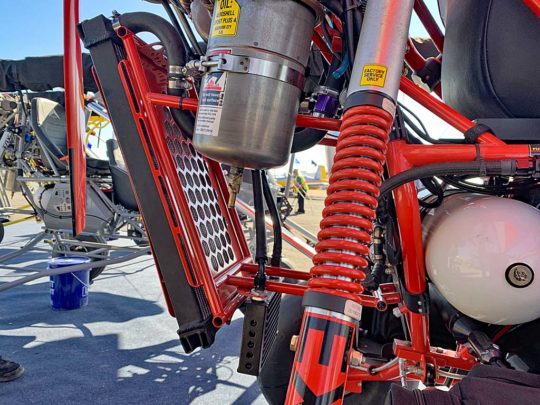 The entire frame is welded chrome moly with a ceramic coating.
Like most trike builders, Denny does not attempt his own wing. That type of construction is its own art and science that one company has proven to do better than anyone else. The company, another trike builder called North Wing, manufactures wings for trikes for other carriage manufacturers. After more than 30 years in the business, North Wing owner, Kamron Blevins largely owns the space. (He also builds wings for Evolution among several other trike aircraft suppliers.) A couple foreign trike builders make their own wings —
The entire frame is welded chrome moly with a ceramic coating.
Like most trike builders, Denny does not attempt his own wing. That type of construction is its own art and science that one company has proven to do better than anyone else. The company, another trike builder called North Wing, manufactures wings for trikes for other carriage manufacturers. After more than 30 years in the business, North Wing owner, Kamron Blevins largely owns the space. (He also builds wings for Evolution among several other trike aircraft suppliers.) A couple foreign trike builders make their own wings —  Prices start at $36,500 (in summer 2020; subject to change). Of course, you can spend more, but with that modest starting cost for this tougher-than-nails trike, Goat qualifies as an "affordable aircraft" as this website promotes. (Of course, "affordable" means something different to every single pilot, but at about the cost of an average new car, I'd say this was a very fair asking price.)
Prices start at $36,500 (in summer 2020; subject to change). Of course, you can spend more, but with that modest starting cost for this tougher-than-nails trike, Goat qualifies as an "affordable aircraft" as this website promotes. (Of course, "affordable" means something different to every single pilot, but at about the cost of an average new car, I'd say this was a very fair asking price.) 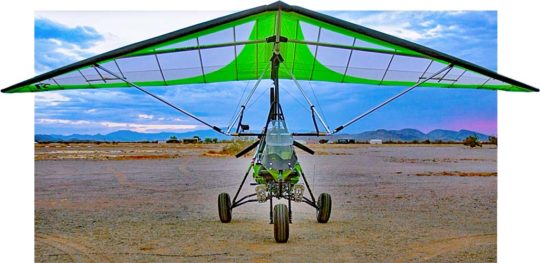 "I enjoy teaching," Denny said, returning to what is obviously a favorite topic after he described details of how he builds Goat.
"After 9,200 hours and 300 students, we have a perfect safety record." He added, rightly so, "I'm very proud of that." He related stories of students who spoke with him years later saying, "I understand why you were so hard on me during training, Denny." So it's no surprise that he reported getting "a hundred applications a year for trike school."
Here's two videos: a newly-produced one from
"I enjoy teaching," Denny said, returning to what is obviously a favorite topic after he described details of how he builds Goat.
"After 9,200 hours and 300 students, we have a perfect safety record." He added, rightly so, "I'm very proud of that." He related stories of students who spoke with him years later saying, "I understand why you were so hard on me during training, Denny." So it's no surprise that he reported getting "a hundred applications a year for trike school."
Here's two videos: a newly-produced one from 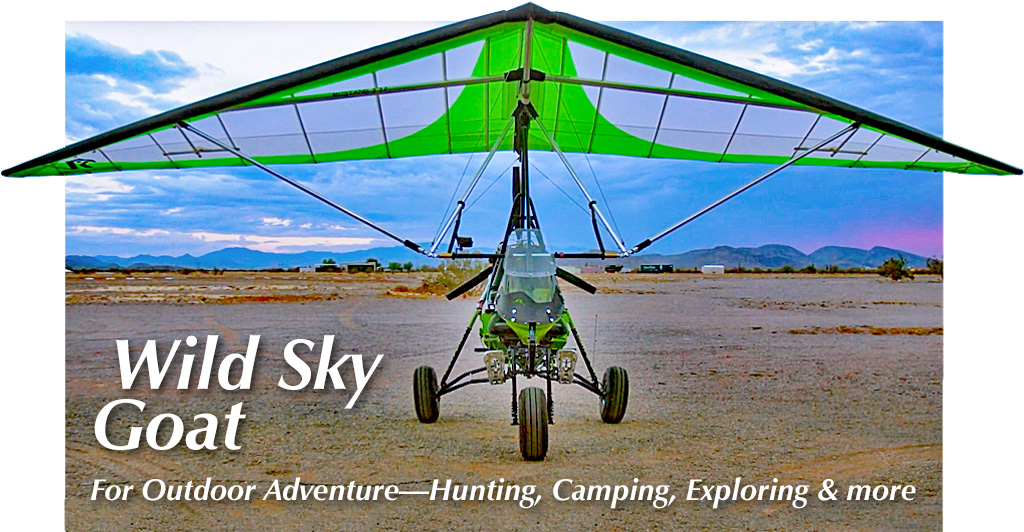
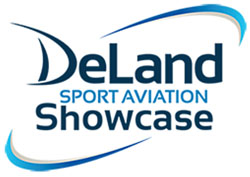 The founding administrator, Jana Filip, made the official announcement, "The 2020 DeLand Sport Aviation Showcase is being rescheduled due to the ongoing Covid-19 pandemic."
Since Copperstate/Buckeye Air Fair in February 2020, the end of July saw a modest gyroplane gathering in Mentone, Indiana for the
The founding administrator, Jana Filip, made the official announcement, "The 2020 DeLand Sport Aviation Showcase is being rescheduled due to the ongoing Covid-19 pandemic."
Since Copperstate/Buckeye Air Fair in February 2020, the end of July saw a modest gyroplane gathering in Mentone, Indiana for the 
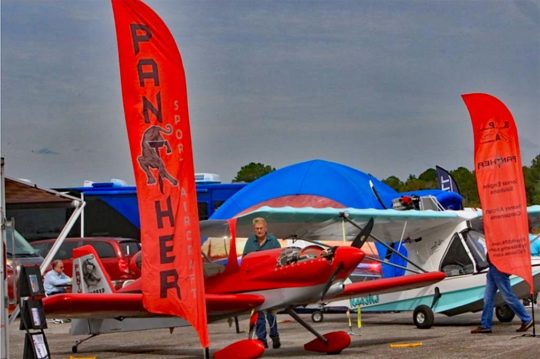 "DeLand Showcase is but the most recent aviation event to have to give way to such concerns," Jana stated.
"Sun 'n Fun in Lakeland, Florida was postponed and then cancelled. EAA's AirVenture Oshkosh has been put off to the summer of 2021 and other major aviation tradeshows such as NBAA and AUVSI were either cancelled or forced to go 'virtual.'"
"DeLand Showcase is but the most recent aviation event to have to give way to such concerns," Jana stated.
"Sun 'n Fun in Lakeland, Florida was postponed and then cancelled. EAA's AirVenture Oshkosh has been put off to the summer of 2021 and other major aviation tradeshows such as NBAA and AUVSI were either cancelled or forced to go 'virtual.'"
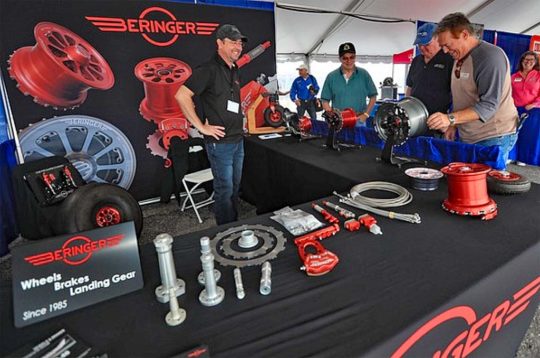
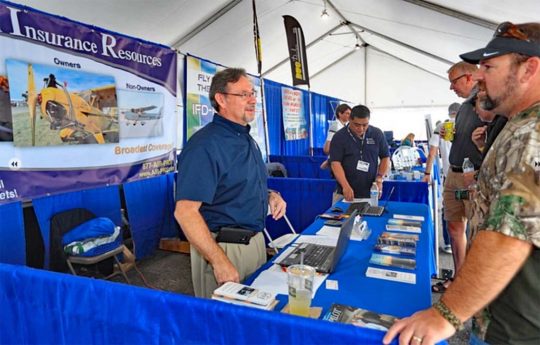
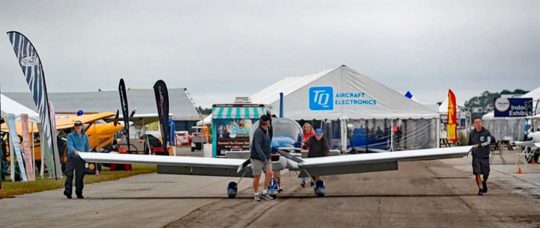 DSAS staff promised an update "as soon as more data is available."
If you wish to offer Jana and her team feedback on the date change,
DSAS staff promised an update "as soon as more data is available."
If you wish to offer Jana and her team feedback on the date change, 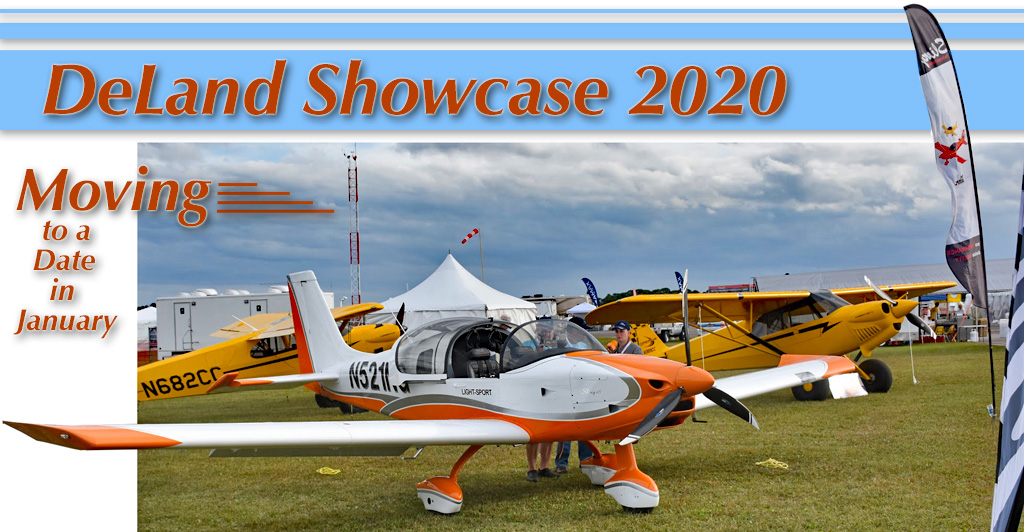
 For 2020, the next airshow is Mt. Vernon Airport's (KMVN)
For 2020, the next airshow is Mt. Vernon Airport's (KMVN) 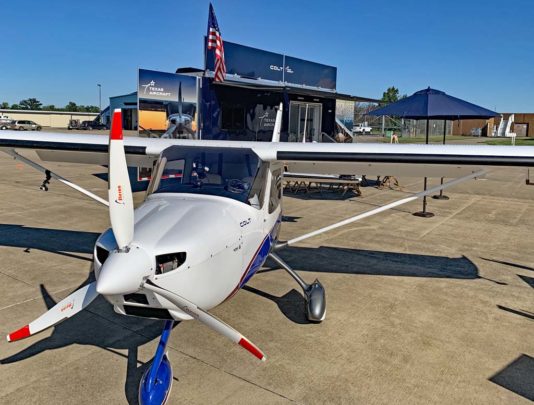
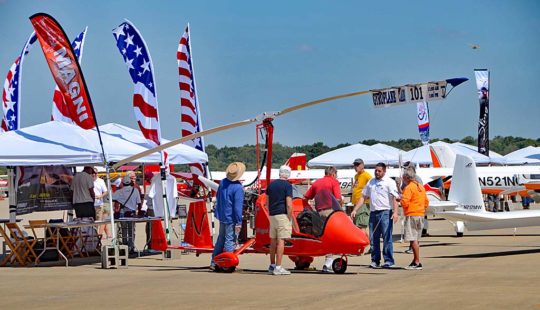
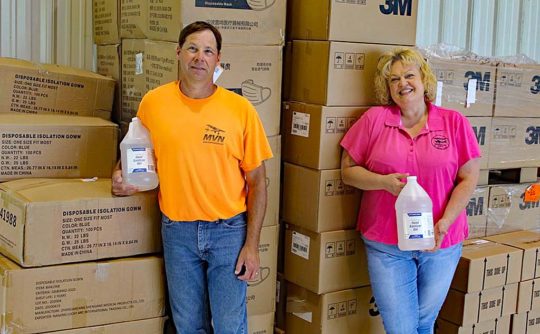
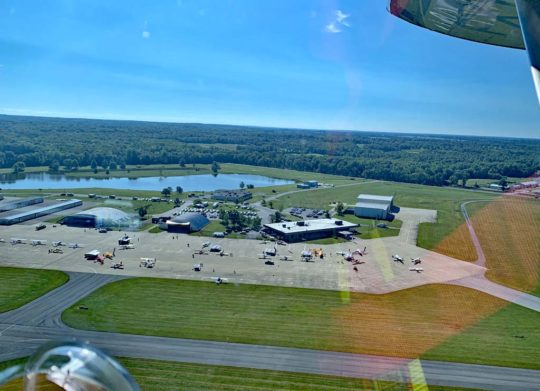


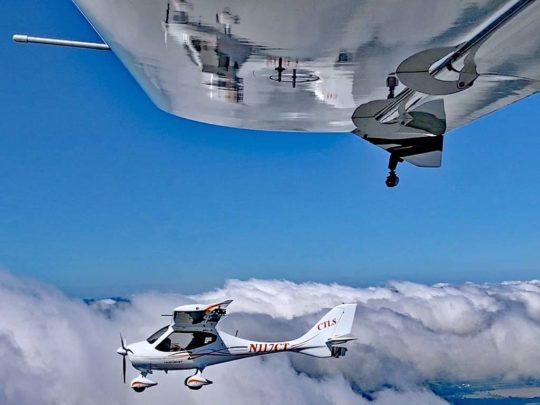
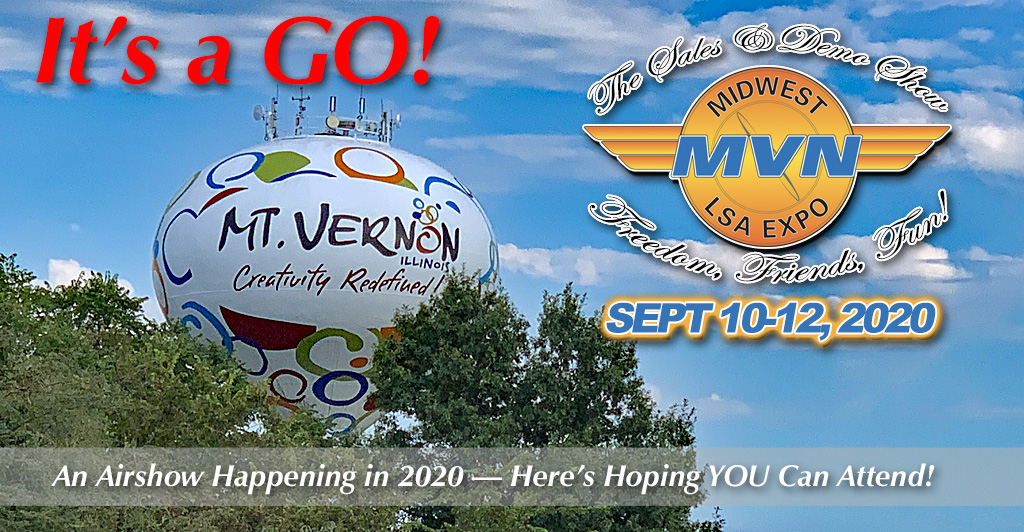
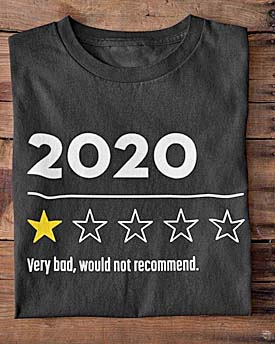
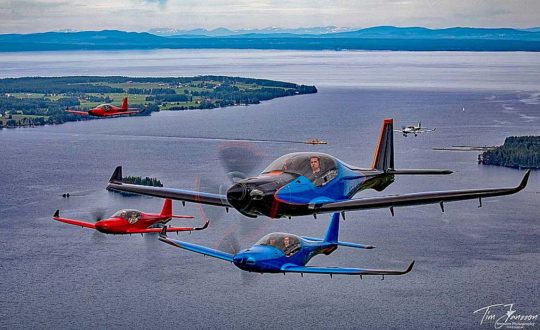 "We have also planned demo tours in Germany.
"We have also planned demo tours in Germany. 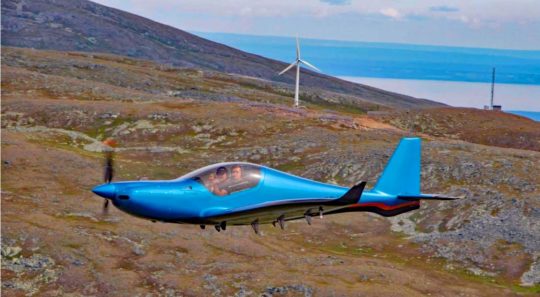 Meanwhile, "The 915iS model is getting close to 35 hours of test flights. We are doing testing at outside temperatures above 30 degrees celsius (86°F) to make sure the installation also works well in hot climates."
"We keep adding safety features," Niklas continued. "The newest one is that you forget to retract the gear — easily done with the 915iS since climb rate is 2,000 feet per minute — and fly above the maximum gear-extended speed, you will get a warning on the Garmin screen and blinking red lights. The same blinking feature is added when the gears are in transition or if you forget to extend your gear (in addition to the built-in
Meanwhile, "The 915iS model is getting close to 35 hours of test flights. We are doing testing at outside temperatures above 30 degrees celsius (86°F) to make sure the installation also works well in hot climates."
"We keep adding safety features," Niklas continued. "The newest one is that you forget to retract the gear — easily done with the 915iS since climb rate is 2,000 feet per minute — and fly above the maximum gear-extended speed, you will get a warning on the Garmin screen and blinking red lights. The same blinking feature is added when the gears are in transition or if you forget to extend your gear (in addition to the built-in 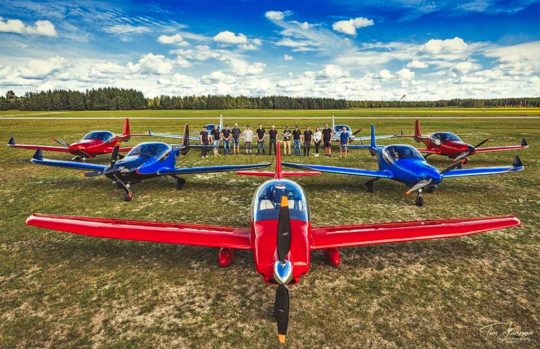
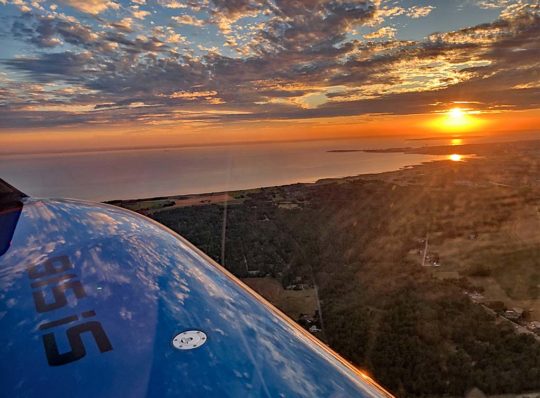
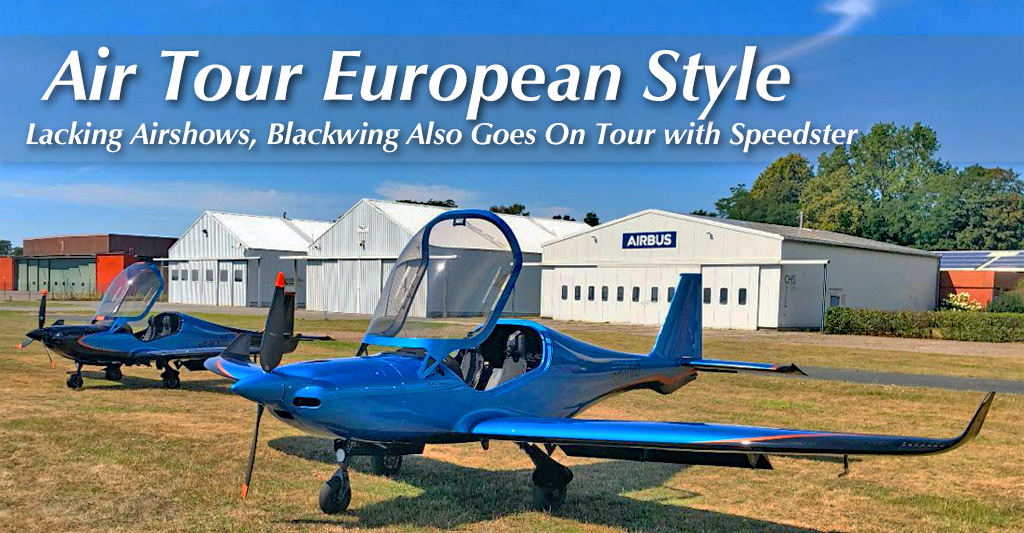
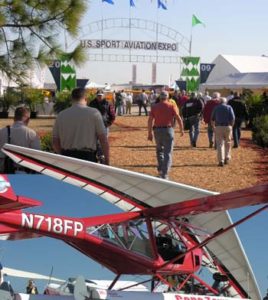 Although a mirror reflection of the greater global economy, many pilots are stunned that airshow after airshow has fallen to the virus. It seems like two or three years ago when, back in February 2020, Videoman Dave and I covered the
Although a mirror reflection of the greater global economy, many pilots are stunned that airshow after airshow has fallen to the virus. It seems like two or three years ago when, back in February 2020, Videoman Dave and I covered the 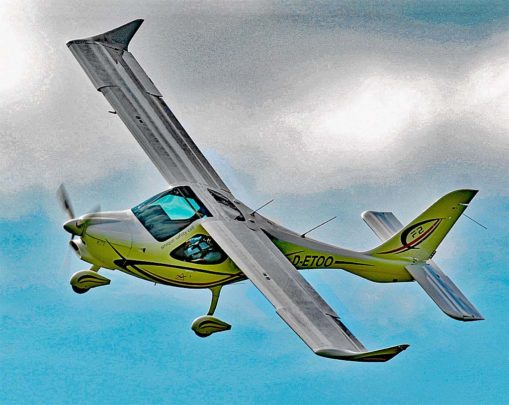 Tom has run
Tom has run 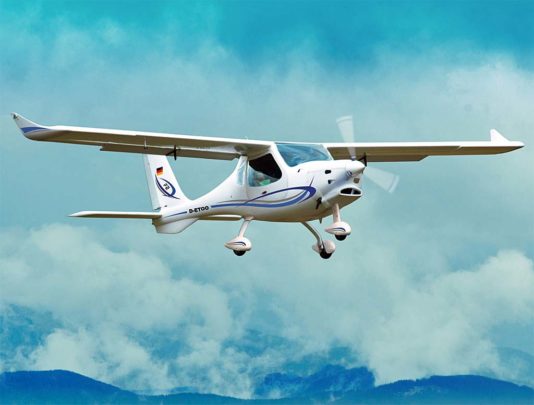 "I'm very impressed with F2. It feels like a bigger airplane, very solid in the air. More stable than I expected. Very easy to land." He's comparing to the CTLS that so many other pilots know.
"F2 feels more stable in the air compared to our CTLS, which offers a sportier feel." Pressing him for details, Tom recounted the following story from a recent flight. It involved F2's autopilot.
"As you know, with the
"I'm very impressed with F2. It feels like a bigger airplane, very solid in the air. More stable than I expected. Very easy to land." He's comparing to the CTLS that so many other pilots know.
"F2 feels more stable in the air compared to our CTLS, which offers a sportier feel." Pressing him for details, Tom recounted the following story from a recent flight. It involved F2's autopilot.
"As you know, with the 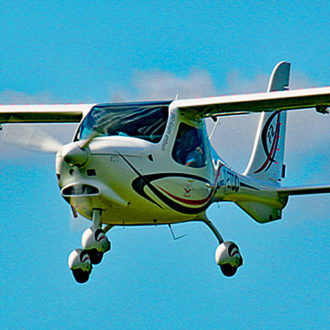 In one of the nearby photos taken from the nose of F2, the vertical surface of the tailplane appears enormous, one to rival the very tall tail on an
In one of the nearby photos taken from the nose of F2, the vertical surface of the tailplane appears enormous, one to rival the very tall tail on an 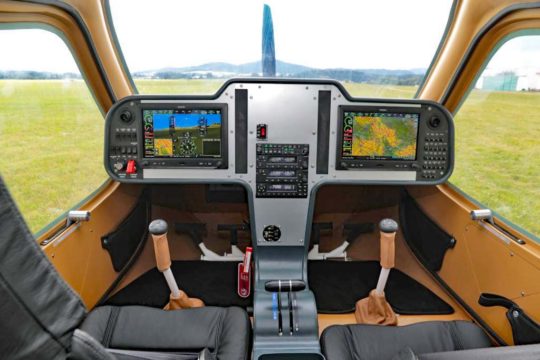
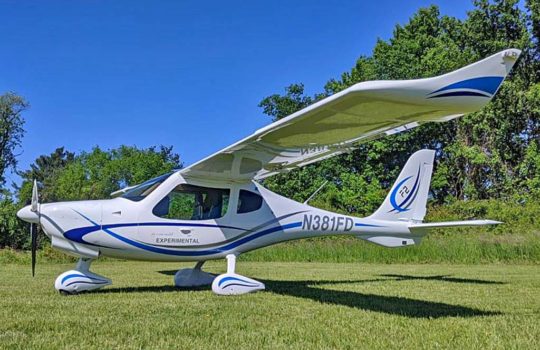
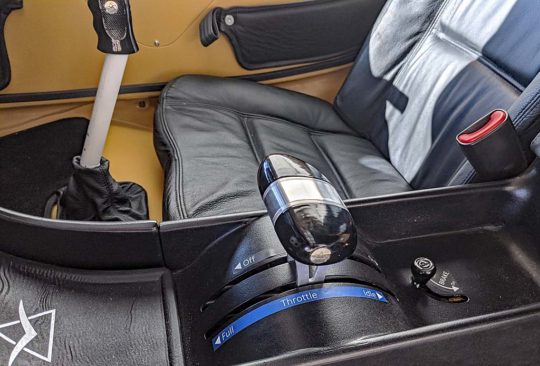
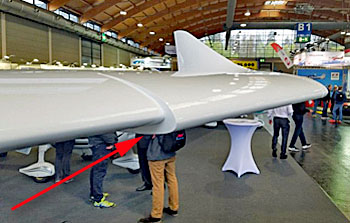 As we discussed the two planes, Tom said he thought I could do the same maneuvers with F2 that I'd done with the Icon A5 and I'd get a similar sensation.
"Departure stalls simply don't," Tom described. "With full flaps, it will 'nod' a bit, a kind of pre-stall but with neutral flaps the stick remains effective at all times."
Tom worked closely with Flight Design during development of F2, playing key roles. He closed saying, "I knew we could achieve those characteristics but I didn't know how well it would fly."
I could almost see his smile over the phone.
I look forward to experience F2, perhaps at the
As we discussed the two planes, Tom said he thought I could do the same maneuvers with F2 that I'd done with the Icon A5 and I'd get a similar sensation.
"Departure stalls simply don't," Tom described. "With full flaps, it will 'nod' a bit, a kind of pre-stall but with neutral flaps the stick remains effective at all times."
Tom worked closely with Flight Design during development of F2, playing key roles. He closed saying, "I knew we could achieve those characteristics but I didn't know how well it would fly."
I could almost see his smile over the phone.
I look forward to experience F2, perhaps at the 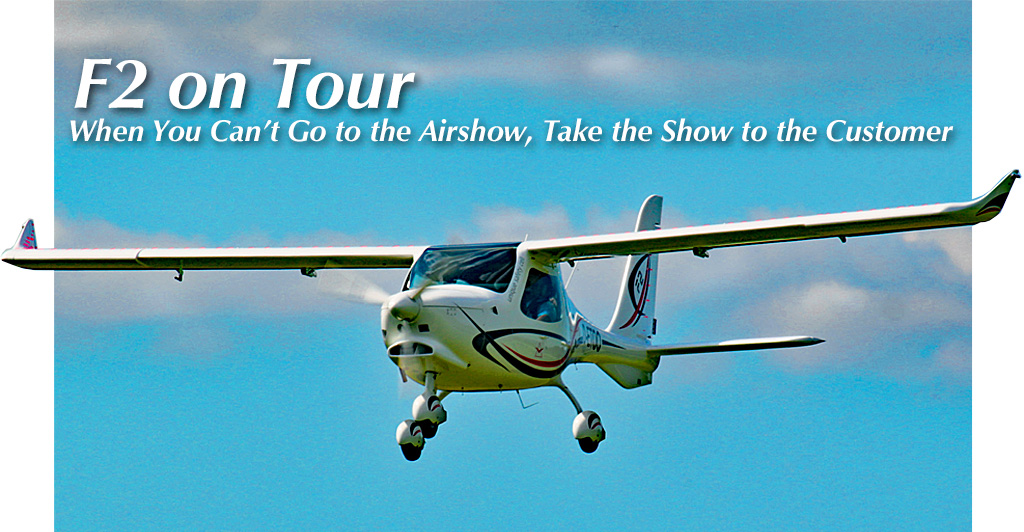

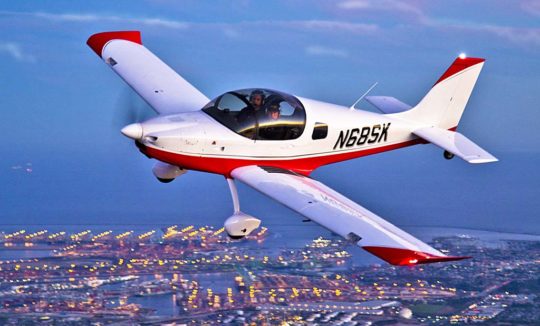
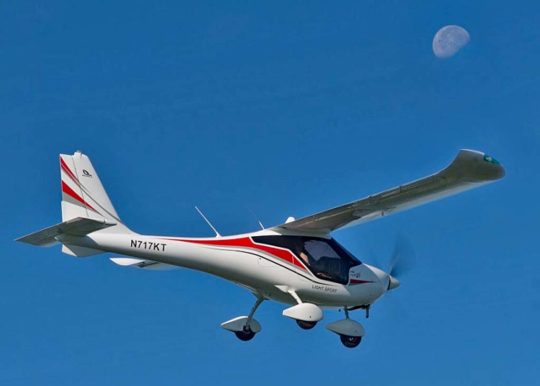
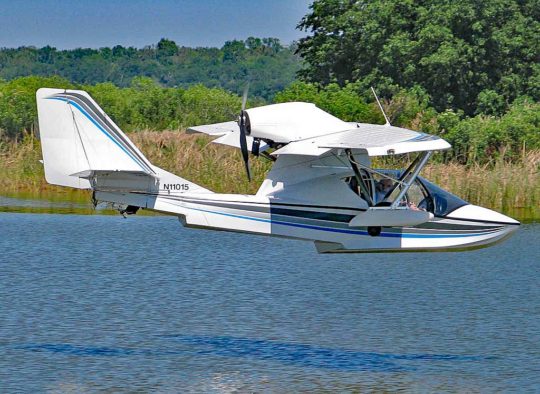

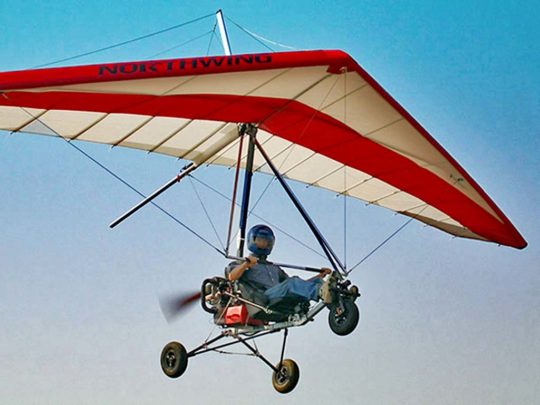
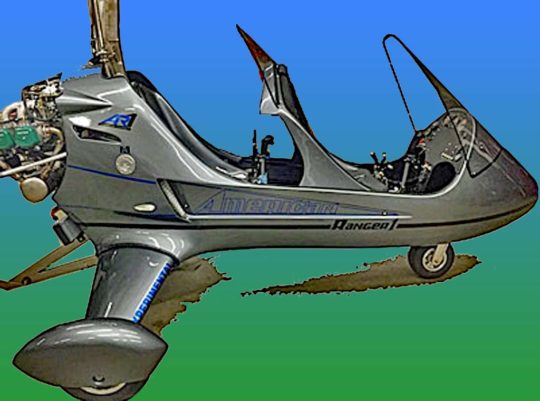
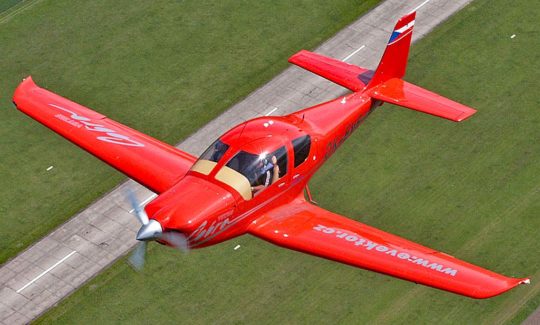
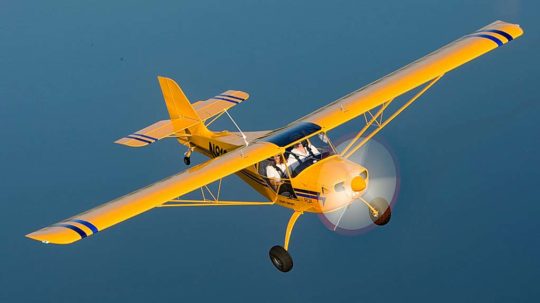
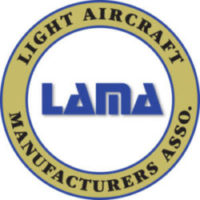 FAA representatives from both Aircraft Certification and Flight Standards have confirmed that — while nothing is certain at this time and that many more people inside the agency must have an opportunity to provide their expertise — all the requests by LAMA remain in consideration.
While LAMA repeated that some LSA do not need to get heavier or larger, nonetheless, growing the segment can be helpful for many business serving this market.
Other changes under consideration (to present LSA):
FAA representatives from both Aircraft Certification and Flight Standards have confirmed that — while nothing is certain at this time and that many more people inside the agency must have an opportunity to provide their expertise — all the requests by LAMA remain in consideration.
While LAMA repeated that some LSA do not need to get heavier or larger, nonetheless, growing the segment can be helpful for many business serving this market.
Other changes under consideration (to present LSA):
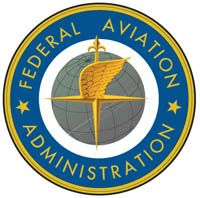 Some FAA goals have not changed:
Some FAA goals have not changed:
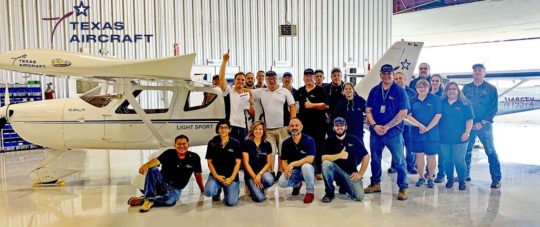
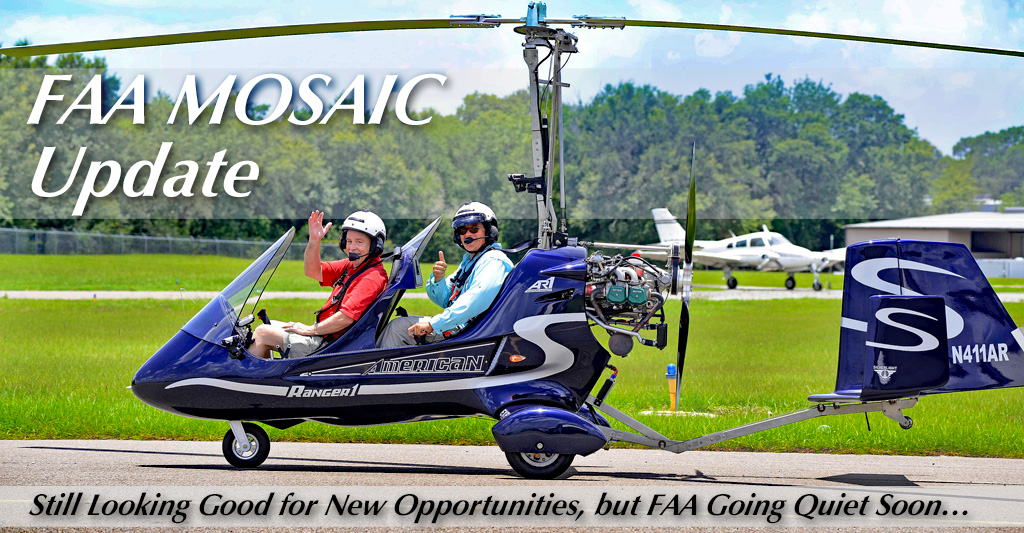
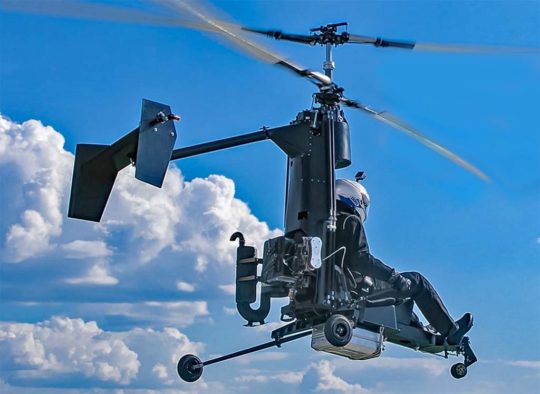 History suggests coaxial rotors originated with Mikhail Lomonosov a very long time ago, according to
History suggests coaxial rotors originated with Mikhail Lomonosov a very long time ago, according to 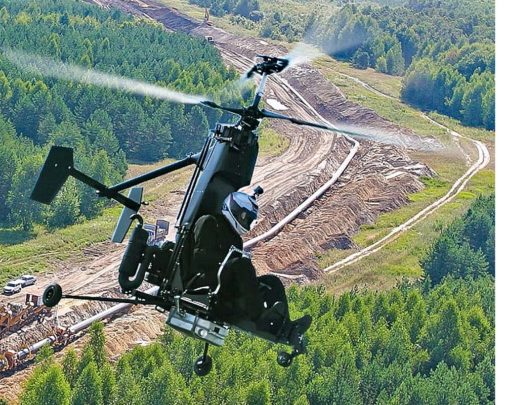
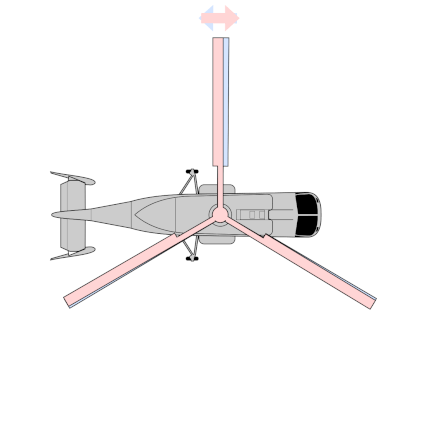 I report this as a fascinating light aircraft but I cannot vouch for Micron-3. It presently has no American representation that I could discover.
I also have no information on pricing although I have contacted the company to request additional details. If they are forthcoming, I'll add to this article.
Generally, though, I can tell you
I report this as a fascinating light aircraft but I cannot vouch for Micron-3. It presently has no American representation that I could discover.
I also have no information on pricing although I have contacted the company to request additional details. If they are forthcoming, I'll add to this article.
Generally, though, I can tell you 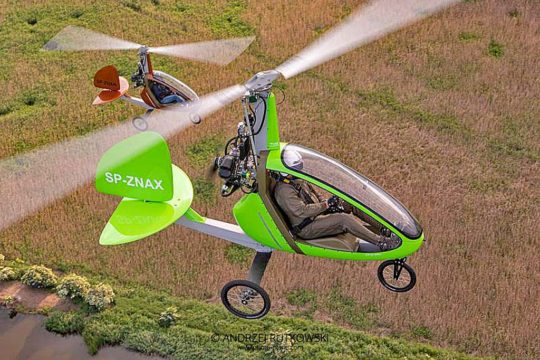 In one way Nano is similar to the original Bensen Gyrocopter. Nano is a single seater. At first, all gyros were one-seaters but since European engineers took the concept and started to advance development, I've seen almost exclusively two seaters.
What's even more unusual is that Nano comes from a company call
In one way Nano is similar to the original Bensen Gyrocopter. Nano is a single seater. At first, all gyros were one-seaters but since European engineers took the concept and started to advance development, I've seen almost exclusively two seaters.
What's even more unusual is that Nano comes from a company call 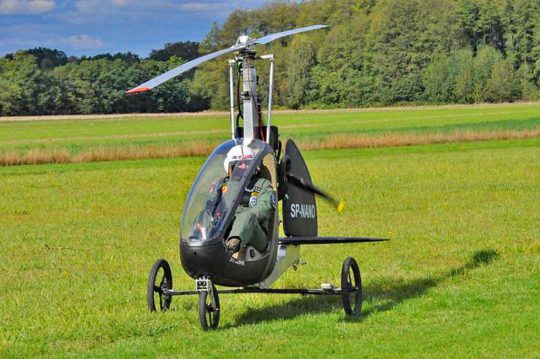 Nano is a simple gyroplane that has a partially-enclosed cabin and a fairly traditional configuration. Empty weight is listed as a modest 220 pounds.
Large-wheels enable take-offs and landings not only on runways but also from undeveloped fields.
Nano uses an aluminum structure, composite body with carbon and kevlar materials. Sturdy-looking 20-inch main wheels allow more confident operation from turf runways or grassy meadows. A suspended 16-inch front wheel also helps negotiate uneven surfaces.
The metal rotor was developed by Fusioncopter, the company notes. Unlike bigger, two-seat gyroplanes that commonly use mechanical means, Nano uses a hydraulic rotor prerotation system to shorten takeoff roll.
It is powered by a popular powered paraglider engine, the Polini Thor 250DS with electric starter and dual ignition system and Fusioncopter reported that it outputs 48 horsepower.
Nano is a simple gyroplane that has a partially-enclosed cabin and a fairly traditional configuration. Empty weight is listed as a modest 220 pounds.
Large-wheels enable take-offs and landings not only on runways but also from undeveloped fields.
Nano uses an aluminum structure, composite body with carbon and kevlar materials. Sturdy-looking 20-inch main wheels allow more confident operation from turf runways or grassy meadows. A suspended 16-inch front wheel also helps negotiate uneven surfaces.
The metal rotor was developed by Fusioncopter, the company notes. Unlike bigger, two-seat gyroplanes that commonly use mechanical means, Nano uses a hydraulic rotor prerotation system to shorten takeoff roll.
It is powered by a popular powered paraglider engine, the Polini Thor 250DS with electric starter and dual ignition system and Fusioncopter reported that it outputs 48 horsepower.
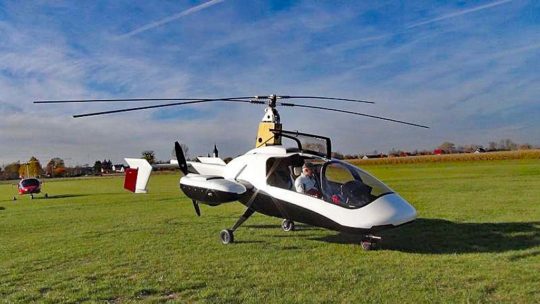
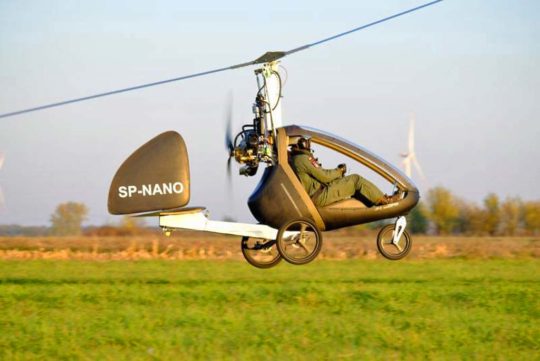 What countries are flying your aircraft? "Today they fly in Poland, Austria, Czech Republic and the next three are going to the USA, followed by two to Germany and two more to Poland."
How long has the company existed? "Fusioncopter was founded in 2012. We made two prototypes of our FC-4 four-seat gyroplane, which needs more time for certification; it shares the same technology employed on JK-2 Nano that is just for fun flying."
When is the twin-engine model available? "I hope we will perform some flights this year but I do not think it will be commercially available for two years (or 2022)."
What countries are flying your aircraft? "Today they fly in Poland, Austria, Czech Republic and the next three are going to the USA, followed by two to Germany and two more to Poland."
How long has the company existed? "Fusioncopter was founded in 2012. We made two prototypes of our FC-4 four-seat gyroplane, which needs more time for certification; it shares the same technology employed on JK-2 Nano that is just for fun flying."
When is the twin-engine model available? "I hope we will perform some flights this year but I do not think it will be commercially available for two years (or 2022)."
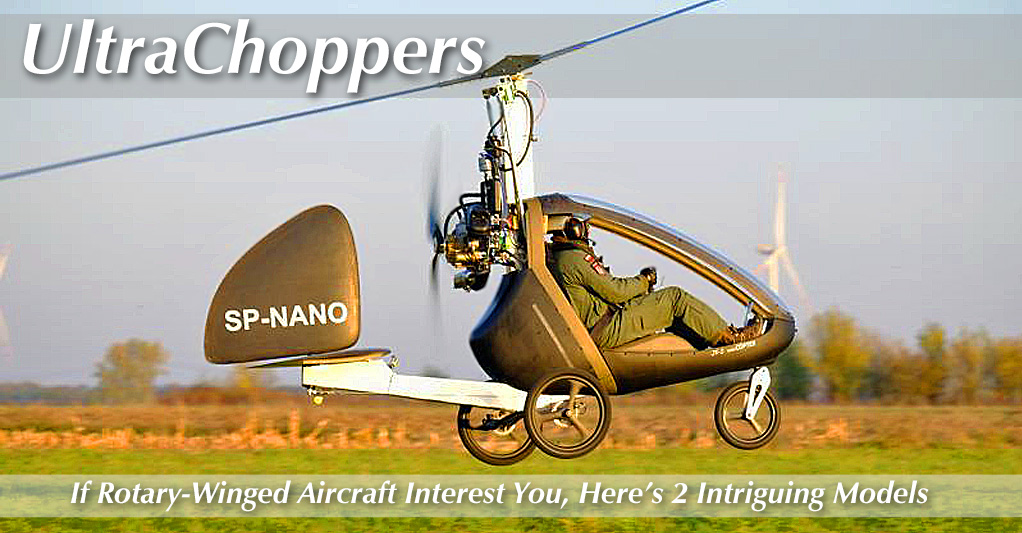
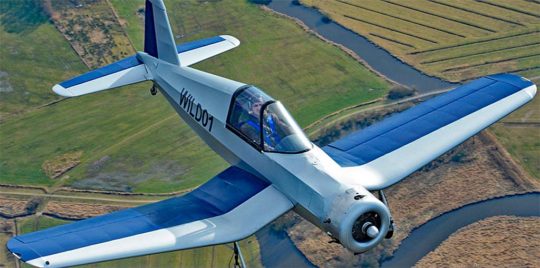
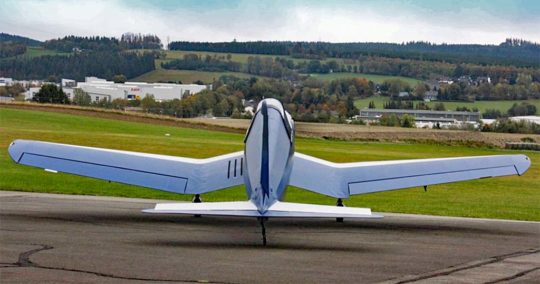 He wanted an aircraft that resembled the famous World War II F4U Corsair fighter. One glance at the nearby photos or the two videos below tells you he did very well. Here's a bit of history about Corsair's
He wanted an aircraft that resembled the famous World War II F4U Corsair fighter. One glance at the nearby photos or the two videos below tells you he did very well. Here's a bit of history about Corsair's 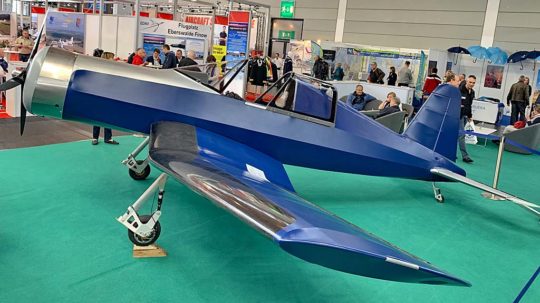 "The general layout — a low inverted gull wing — has been successfully used in several aircraft already," explained Jörg. "The Chance-Vought Corsair surely is one of the more famous aircraft with this concept." Jörg notes the main advantages to this configuration are a low interference drag between wing and fuselage as well as an ideal landing gear position, "which allows as well a nearly perfect angle for take off and landings."
Corsair is adjustable to pilots of many sizes. "The ergonomics have been optimized with the help of our local flying club," Jörg recalled, "[so Corsair] is suitable for pilots ranging from 5 foot 4 inches to 6 foot 8 inches (1,60 to 2 meters). Cockpit width is 23.6 inches (60 centimeters).
"Our seat is adjustable in four length/height positions and the incline is independently adjustable in 11 positions," he said (see in video). "Rudder pedals are adjustable as well and the stick has two positions." In other words a fairly wide range of pilots should fit in Corsair.
"The general layout — a low inverted gull wing — has been successfully used in several aircraft already," explained Jörg. "The Chance-Vought Corsair surely is one of the more famous aircraft with this concept." Jörg notes the main advantages to this configuration are a low interference drag between wing and fuselage as well as an ideal landing gear position, "which allows as well a nearly perfect angle for take off and landings."
Corsair is adjustable to pilots of many sizes. "The ergonomics have been optimized with the help of our local flying club," Jörg recalled, "[so Corsair] is suitable for pilots ranging from 5 foot 4 inches to 6 foot 8 inches (1,60 to 2 meters). Cockpit width is 23.6 inches (60 centimeters).
"Our seat is adjustable in four length/height positions and the incline is independently adjustable in 11 positions," he said (see in video). "Rudder pedals are adjustable as well and the stick has two positions." In other words a fairly wide range of pilots should fit in Corsair.
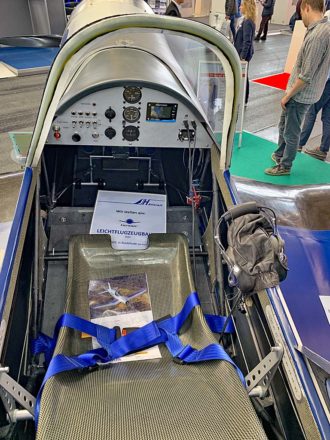 Jörg said, "We selected the Verner Scarlett 3 VW, a four-stroke, three-cylinder radial engine, [which was] purposefully designed as a light aircraft engine." The Vernor produces 42 horsepower at 2500 rpm using a displacement of 96 cubic inches (1.6 liters).
"The high engine torque allows the use of a rather big and efficient propeller," observed Jörg, again mimicking design parameters of the F4U Corsair. "We use a ground adjustable 63-inch (1,60 meter) carbon prop that can produce, depending on the blade pitch, up to 220 pounds of static thrust, more than enough for Corsair's empty weight!"
U.S. importer
Jörg said, "We selected the Verner Scarlett 3 VW, a four-stroke, three-cylinder radial engine, [which was] purposefully designed as a light aircraft engine." The Vernor produces 42 horsepower at 2500 rpm using a displacement of 96 cubic inches (1.6 liters).
"The high engine torque allows the use of a rather big and efficient propeller," observed Jörg, again mimicking design parameters of the F4U Corsair. "We use a ground adjustable 63-inch (1,60 meter) carbon prop that can produce, depending on the blade pitch, up to 220 pounds of static thrust, more than enough for Corsair's empty weight!"
U.S. importer 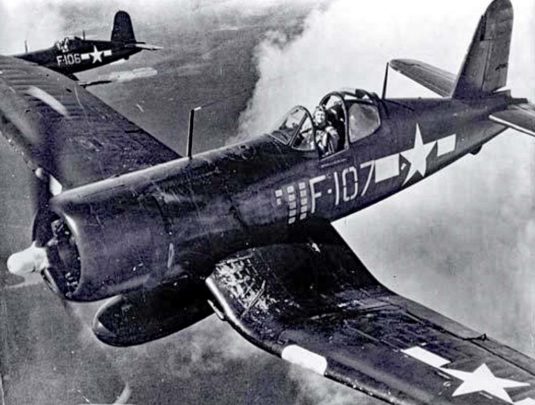 If you like the idea of a lightweight, Part 103 aircraft (no license, no N-numbers, no medical) that is certain to turn a lot of heads at any airport you visit, Corsair is definitely a distinctive and interesting ultralight.
If you like the idea of a lightweight, Part 103 aircraft (no license, no N-numbers, no medical) that is certain to turn a lot of heads at any airport you visit, Corsair is definitely a distinctive and interesting ultralight.
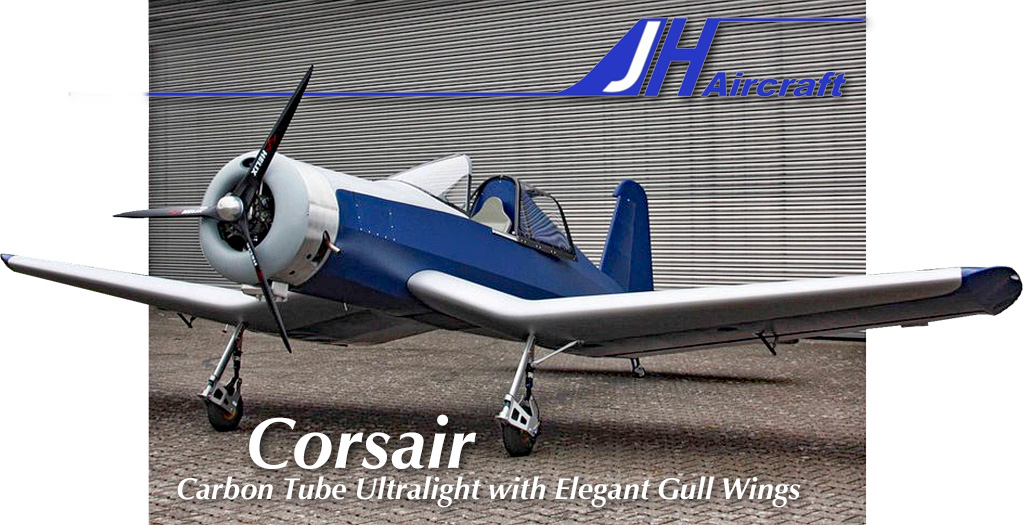
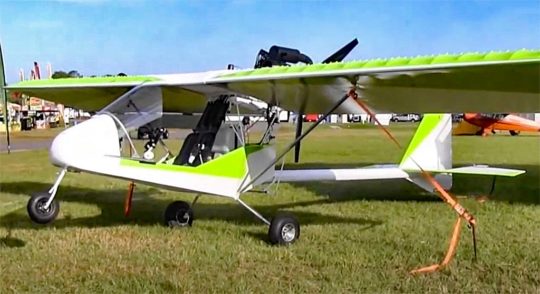 Indeed, when investigating insurance for a taildragger, you will have to prove you have some experience or get training from a suitably-experienced instructor — and you won't find many able to help you.
How about if an aircraft went both ways? What if an affordable aircraft allowed you to fly with tricycle gear but permitted you to practice your taildragger technique yet still use the nosewheel's self-straightening capability if you start to get a little "sideways" (literally or figuratively)?
Kolb Aircraft has an answer.
Indeed, when investigating insurance for a taildragger, you will have to prove you have some experience or get training from a suitably-experienced instructor — and you won't find many able to help you.
How about if an aircraft went both ways? What if an affordable aircraft allowed you to fly with tricycle gear but permitted you to practice your taildragger technique yet still use the nosewheel's self-straightening capability if you start to get a little "sideways" (literally or figuratively)?
Kolb Aircraft has an answer.
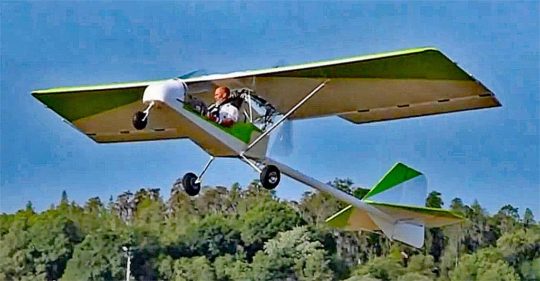 Nonsense!
That's just plain wrong and here's proof: Go to a producer of Part 103 aircraft and ask about delivery time. You'll probably find a longer wait than you expected.
Nonsense!
That's just plain wrong and here's proof: Go to a producer of Part 103 aircraft and ask about delivery time. You'll probably find a longer wait than you expected. 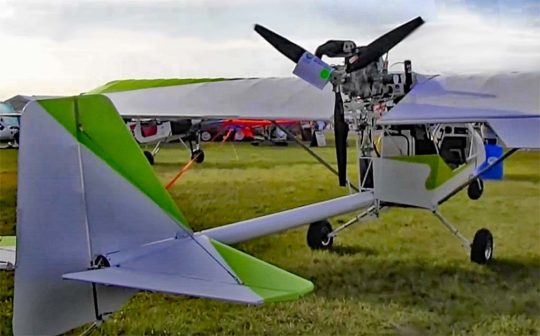 Why are single-place aircraft growing in popularity?
Several good reasons account for Part 103 success but prices for these least-regulated aircraft remain surprisingly low
Why are single-place aircraft growing in popularity?
Several good reasons account for Part 103 success but prices for these least-regulated aircraft remain surprisingly low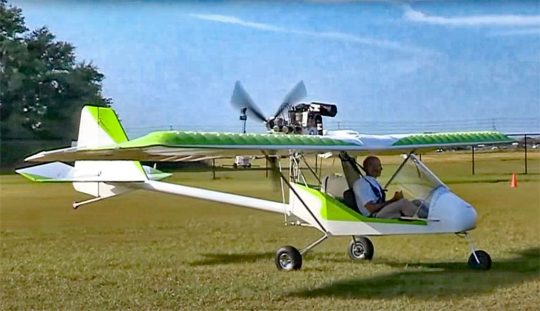 Cool as taildraggers may be, the last couple generations of pilots overwhelmingly learned to fly in tricycle gear aircraft. Most don't care to advertise their lack of history with "conventional gear."
To address potential customers telling him they were unsure about their success with a taildragger, Kolb main man, Bryan Melborn engineered a tricycle-gear version of FireFly. He inventively calls it TriFly.
In truth TriFly also comes with a tailwheel. That's some of the magic because Bryan reports you can definitely perform a three-point landing (main gear touching down in concert with the tailwheel) in TriFly. You can keep rolling out all the way to a stop without the nosewheel contacting terra firms. When the movement stops or you relax the joystick, TriFly will go back to tricycle mode and you can taxi back to your hangar or tie-down.
Cool as taildraggers may be, the last couple generations of pilots overwhelmingly learned to fly in tricycle gear aircraft. Most don't care to advertise their lack of history with "conventional gear."
To address potential customers telling him they were unsure about their success with a taildragger, Kolb main man, Bryan Melborn engineered a tricycle-gear version of FireFly. He inventively calls it TriFly.
In truth TriFly also comes with a tailwheel. That's some of the magic because Bryan reports you can definitely perform a three-point landing (main gear touching down in concert with the tailwheel) in TriFly. You can keep rolling out all the way to a stop without the nosewheel contacting terra firms. When the movement stops or you relax the joystick, TriFly will go back to tricycle mode and you can taxi back to your hangar or tie-down.
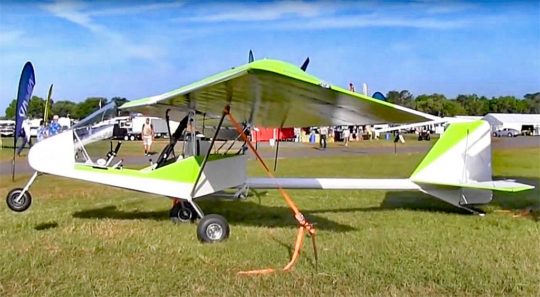 Or, if you prefer, land TriFly like any Cessna; that works well, too.
My personal experience with Kolb Aircraft — having flown numerous models over many years — indicates that great handling qualities are a Kolb trademark: light controls with good response, nearly perfect for most pilots. Performance in matters such as takeoff roll, landing distance, and climb rates are superb. As a Part 103 aircraft, speeds are limited by regulation but TriFly fills the envelope fully.
In every way, Kolb taildraggers are a delight to operate and, truly, you should not fear the taildragger. If you are unsure or if you don't want to meet the insurance demands for a taildragger then TriFly may be the perfect combination. You can have it both ways all in one machine with no adding or removing components.
Or, if you prefer, land TriFly like any Cessna; that works well, too.
My personal experience with Kolb Aircraft — having flown numerous models over many years — indicates that great handling qualities are a Kolb trademark: light controls with good response, nearly perfect for most pilots. Performance in matters such as takeoff roll, landing distance, and climb rates are superb. As a Part 103 aircraft, speeds are limited by regulation but TriFly fills the envelope fully.
In every way, Kolb taildraggers are a delight to operate and, truly, you should not fear the taildragger. If you are unsure or if you don't want to meet the insurance demands for a taildragger then TriFly may be the perfect combination. You can have it both ways all in one machine with no adding or removing components.
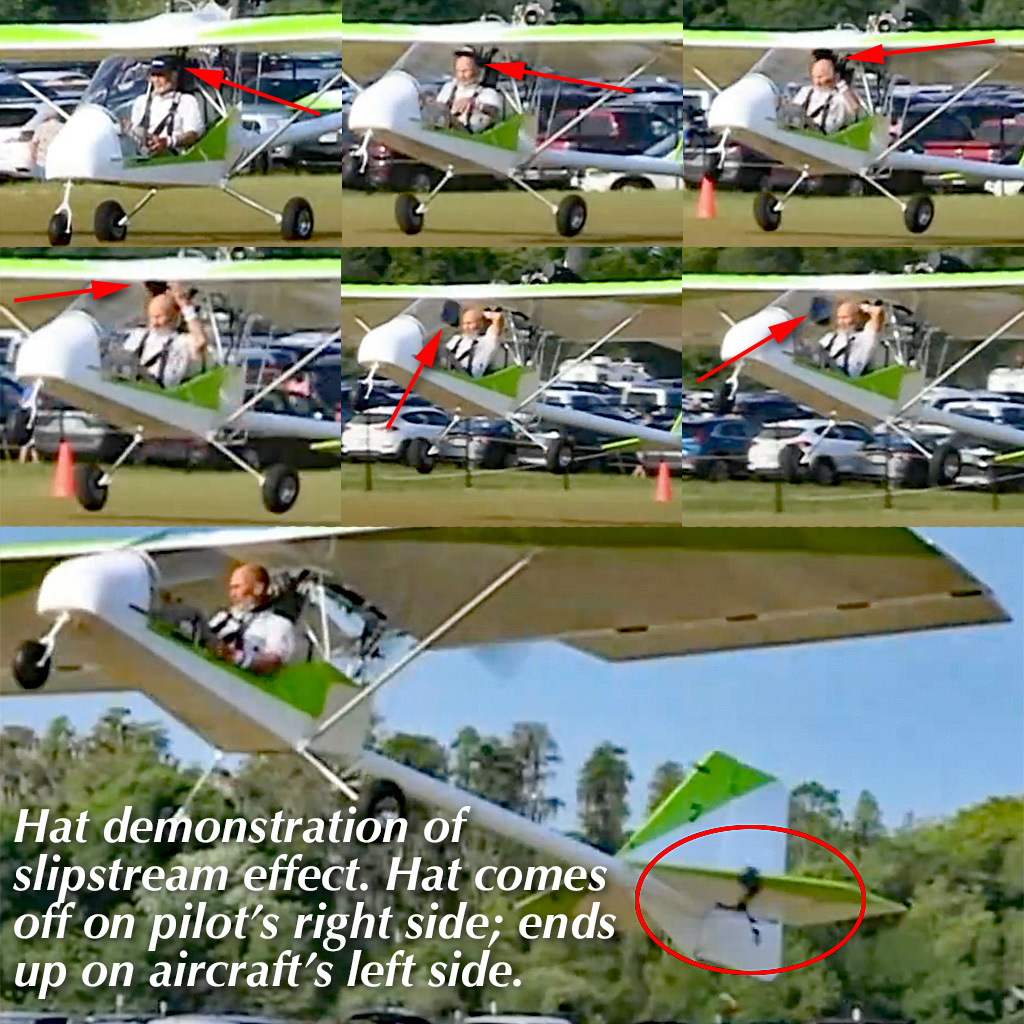
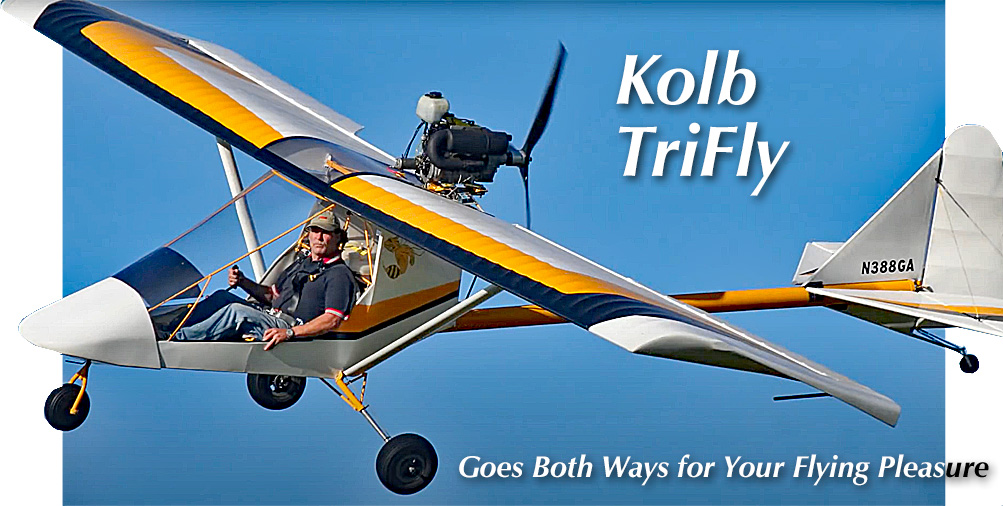
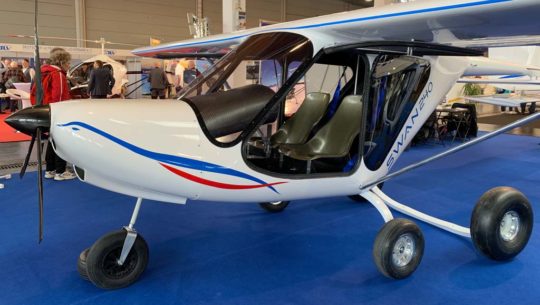 To select another aircraft type means going out on a tree limb. This is especially true with what I call "alternative aircraft" — weight shift trikes, powered parachutes, motorgliders, and gyroplanes. It would include lighter-than-air, too, if we had more than
To select another aircraft type means going out on a tree limb. This is especially true with what I call "alternative aircraft" — weight shift trikes, powered parachutes, motorgliders, and gyroplanes. It would include lighter-than-air, too, if we had more than 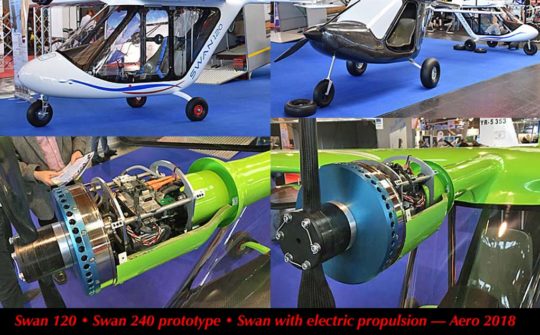 That's great. Swan 120 is reportedly a well-flying aircraft; I have not had the chance yet.
Yet lots of potential buyers may prefer a two seater and as the video below shows, I did see a finished version of such at
That's great. Swan 120 is reportedly a well-flying aircraft; I have not had the chance yet.
Yet lots of potential buyers may prefer a two seater and as the video below shows, I did see a finished version of such at 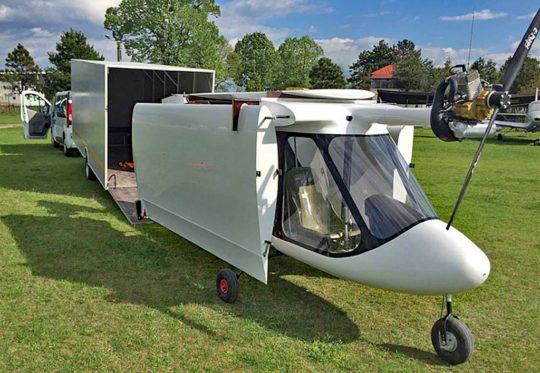 Radu owns a larger company, Avi, in Romania where he makes all sorts of industrial composite components for trains, aircraft, and backyard swimming pools. He's an aeronautical engineer with 25 years experience in composite construction. As with similar companies, the airplane portion of the business is a smaller segment of the overall enterprise although Berceanu is very passionate about aviation.
Unlike Swan 120 that qualifies as a 120 Kilo Class aircraft under German rules, a two-seat Swan 240 at about twice the weight must earn approval in a higher class. Peter observed, "Swan 240 [cannot use rules for] Swan 120 Europe-wide."
Instead, Swan 240 must qualify under EASA rules or those from the CAA of each European country. While rules in many countries are similar for light aircraft, they are not identical. "It is still not quite clear what max takeoff weight Swan 240 is allowed to have, 600 or 640 kilograms," clarified Peter. "The rules are different, which is one of the reasons why we still wait a little bit."
In the USA, Swan 240 would have to be a kit or go through the approval process for Light-Sport Aircraft (no small task).
Radu owns a larger company, Avi, in Romania where he makes all sorts of industrial composite components for trains, aircraft, and backyard swimming pools. He's an aeronautical engineer with 25 years experience in composite construction. As with similar companies, the airplane portion of the business is a smaller segment of the overall enterprise although Berceanu is very passionate about aviation.
Unlike Swan 120 that qualifies as a 120 Kilo Class aircraft under German rules, a two-seat Swan 240 at about twice the weight must earn approval in a higher class. Peter observed, "Swan 240 [cannot use rules for] Swan 120 Europe-wide."
Instead, Swan 240 must qualify under EASA rules or those from the CAA of each European country. While rules in many countries are similar for light aircraft, they are not identical. "It is still not quite clear what max takeoff weight Swan 240 is allowed to have, 600 or 640 kilograms," clarified Peter. "The rules are different, which is one of the reasons why we still wait a little bit."
In the USA, Swan 240 would have to be a kit or go through the approval process for Light-Sport Aircraft (no small task).
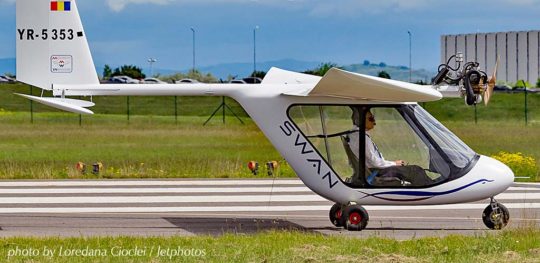
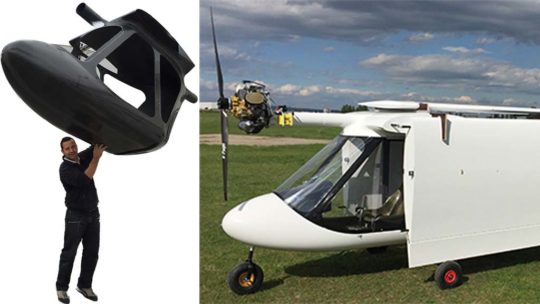 Transport & Storage
Transport & Storage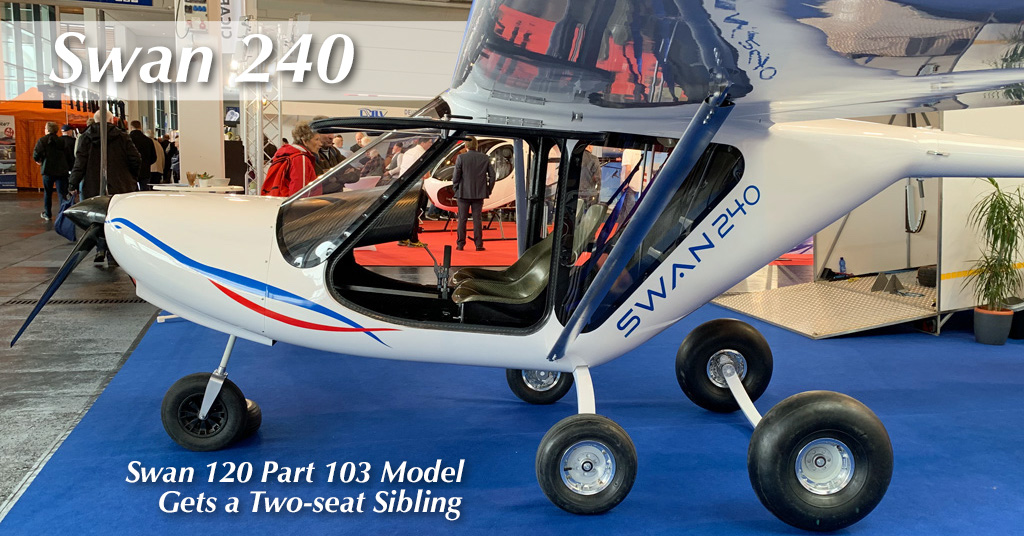
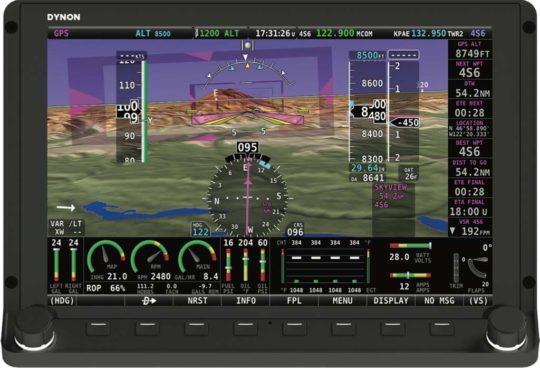
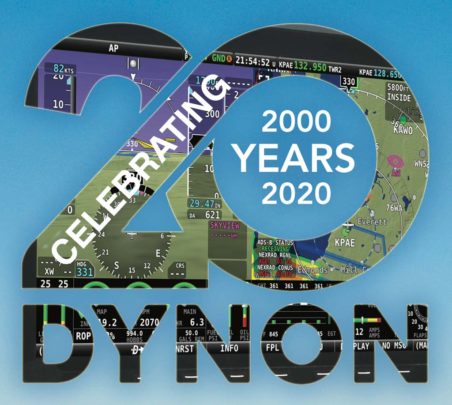 "In 2000, we were frustrated with the lack of affordable modern avionics for sport aircraft," remembered Dynon, "and [we] decided to do something about it."
The result?
Dynon led a sea change in modern GA aircraft avionics, equipping over 20,000 sport aircraft and then venturing into the "certified" world of colorful EFIS screens for legacy airplanes.
Dynon's first D-10 started shipping in 2003 and they've moved forward smartly ever since.
Today, pilots forget that the first fancy computerized instruments for aircraft cost more then than an entire Light-Sport Aircraft today. Dynon almost single-handedly drove down the dizzyingly high prices to something sport pilots could afford and we embraced them enthusiastically.
Dynon went on to become titanium-strong pillar of the aviation marketplace.
"In 2000, we were frustrated with the lack of affordable modern avionics for sport aircraft," remembered Dynon, "and [we] decided to do something about it."
The result?
Dynon led a sea change in modern GA aircraft avionics, equipping over 20,000 sport aircraft and then venturing into the "certified" world of colorful EFIS screens for legacy airplanes.
Dynon's first D-10 started shipping in 2003 and they've moved forward smartly ever since.
Today, pilots forget that the first fancy computerized instruments for aircraft cost more then than an entire Light-Sport Aircraft today. Dynon almost single-handedly drove down the dizzyingly high prices to something sport pilots could afford and we embraced them enthusiastically.
Dynon went on to become titanium-strong pillar of the aviation marketplace.
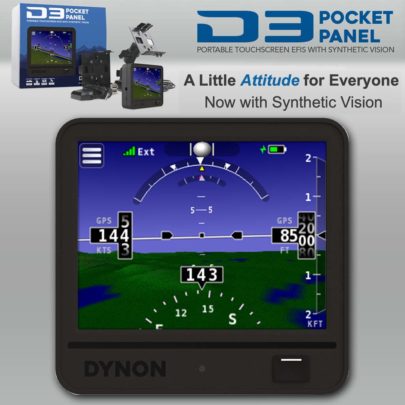
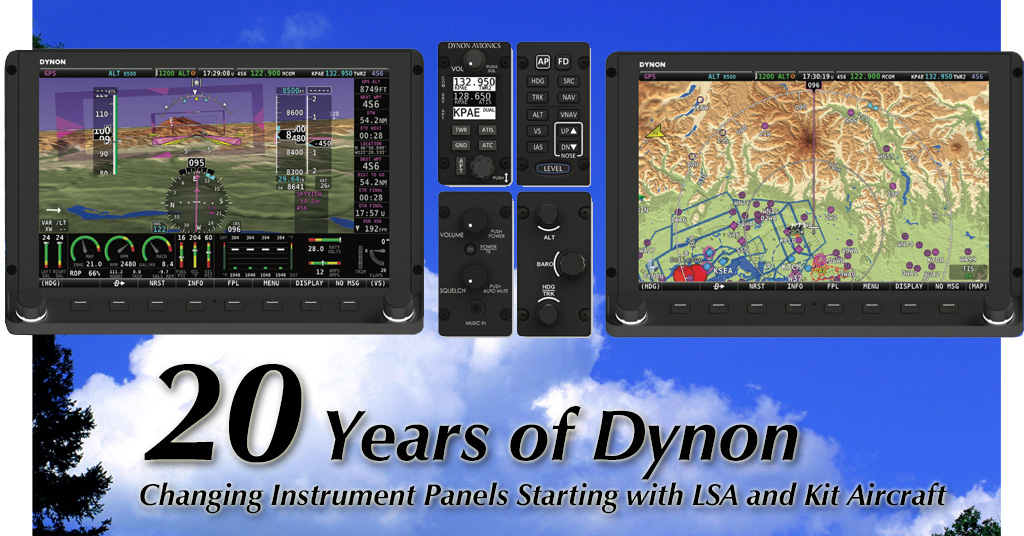
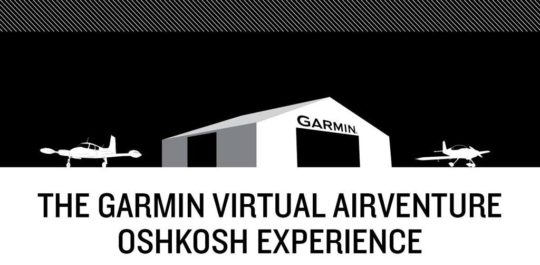
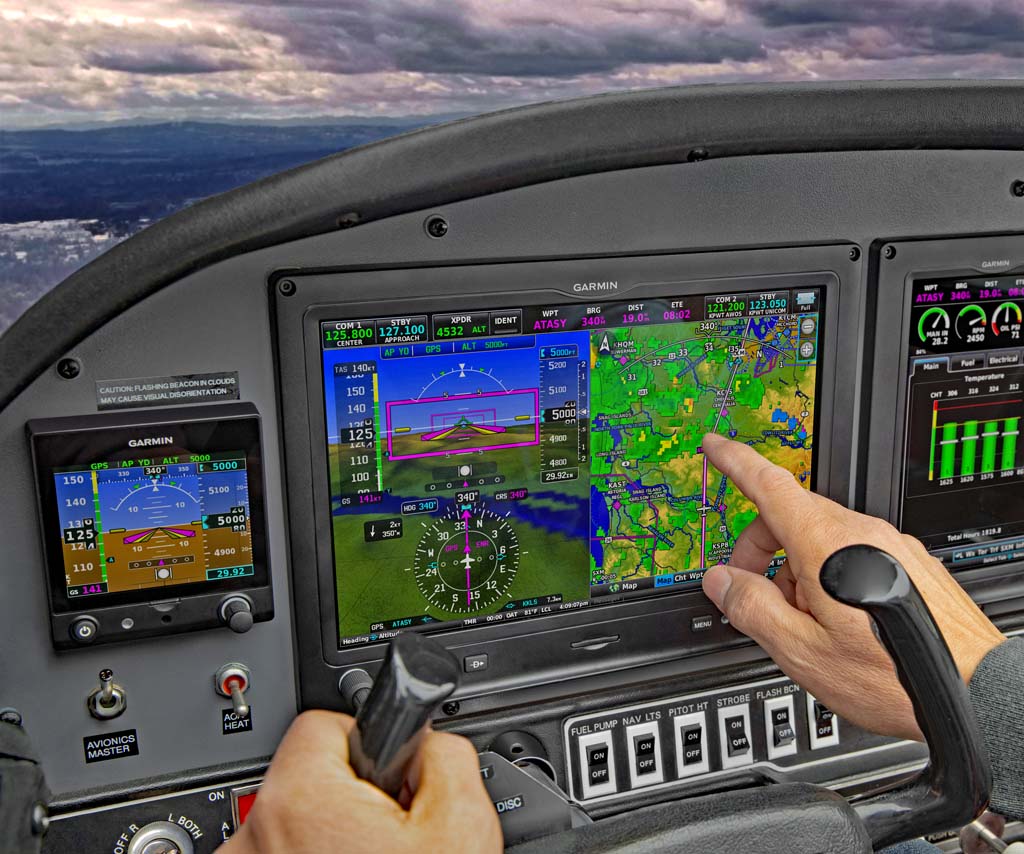


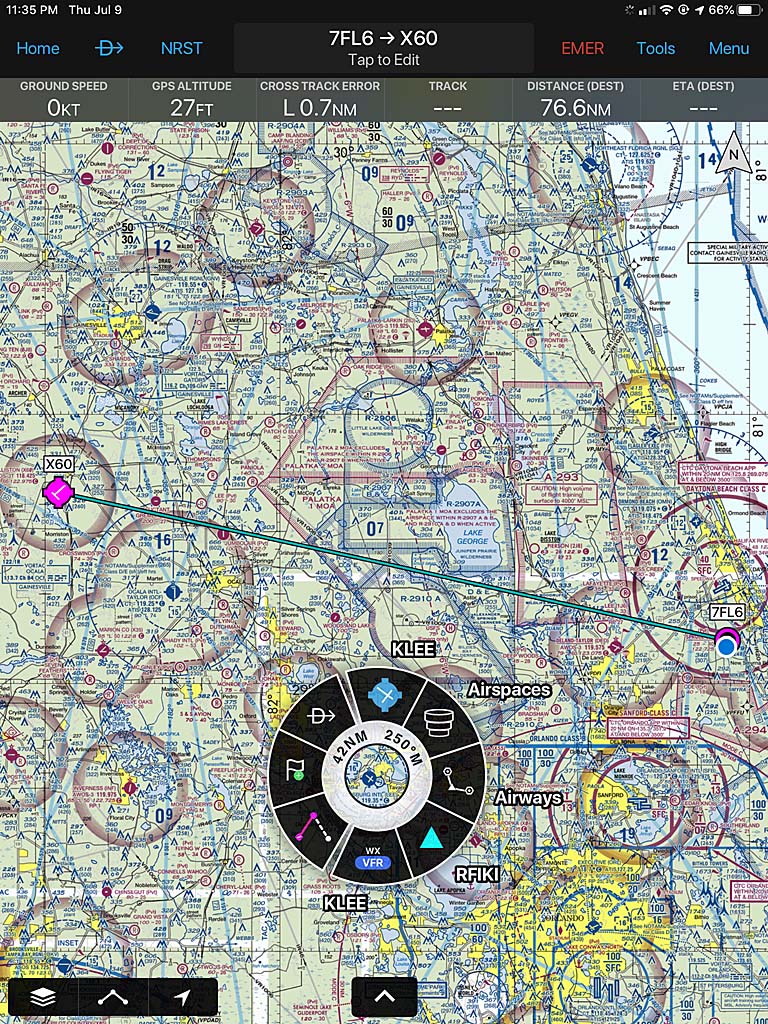
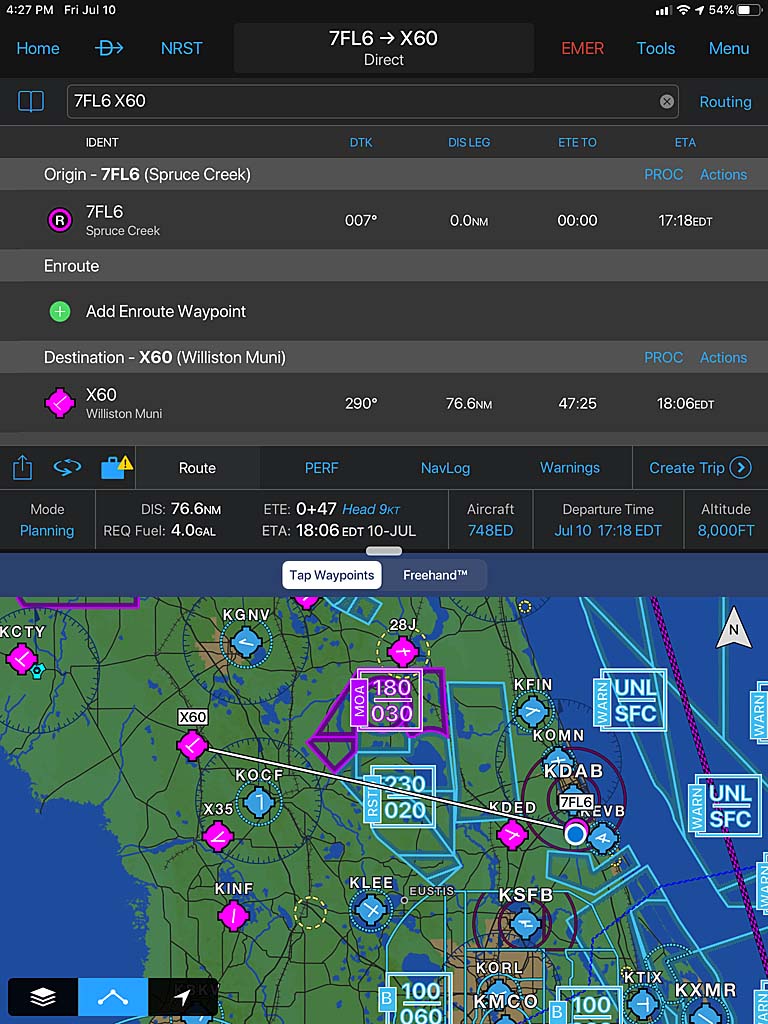
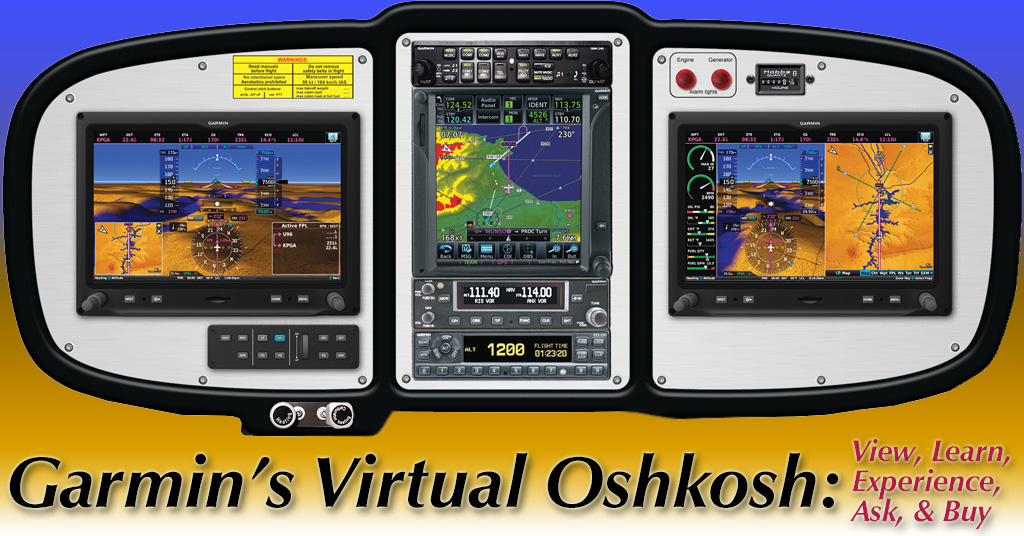
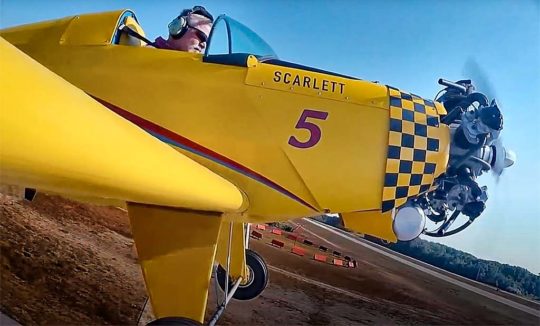
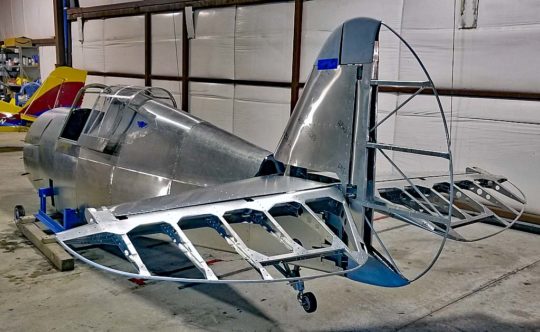 "These [are] very fun machines; speedy, and capable of mild aerobatics," Sam said. LiteFighters offer the kind of flying a weekend warrior wants to do. "LiteFighter aerodynamics are driven by requirements," Sam explained, giving as examples: "low stall speed with gentle stall characteristics, high climb rate, great speed for the power, excellent maneuverability, and fun scale-sized airframe."
When Sam mentions "modular," he means that ScaleBirds designs are based on a structural core airframe with skins being "hung" on the outside primarily for aesthetic and aerodynamic purposes.
"These [are] very fun machines; speedy, and capable of mild aerobatics," Sam said. LiteFighters offer the kind of flying a weekend warrior wants to do. "LiteFighter aerodynamics are driven by requirements," Sam explained, giving as examples: "low stall speed with gentle stall characteristics, high climb rate, great speed for the power, excellent maneuverability, and fun scale-sized airframe."
When Sam mentions "modular," he means that ScaleBirds designs are based on a structural core airframe with skins being "hung" on the outside primarily for aesthetic and aerodynamic purposes.
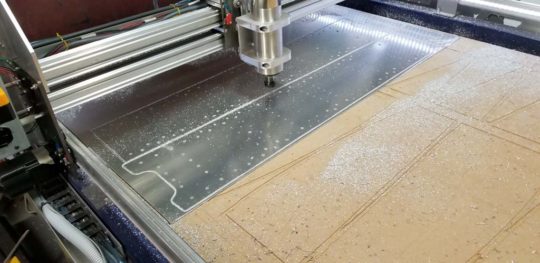
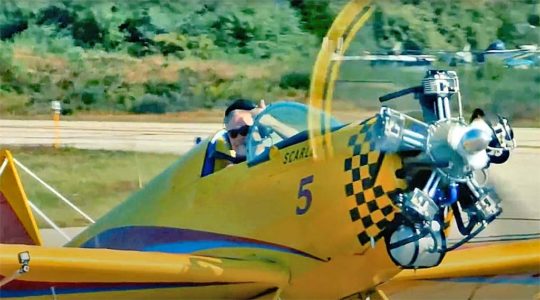 ScaleBirds is comprised of a small team from southeastern Connecticut. "Our experience is in art, design, engineering, robotics, manufacturing, and of course, aircraft," Sam observed. "We have been using all of our skills and developing new ones in order to deliver something new to the world of flying." These replicas are single seat sport planes, designed to be economical and fun.
"We have also done design work, and built parts for, a larger two-seat aircraft: a 63%-scale F6F Hellcat," Sam reported. "It will be completed as the first example of what we call the SportFighters series."
ScaleBirds is comprised of a small team from southeastern Connecticut. "Our experience is in art, design, engineering, robotics, manufacturing, and of course, aircraft," Sam observed. "We have been using all of our skills and developing new ones in order to deliver something new to the world of flying." These replicas are single seat sport planes, designed to be economical and fun.
"We have also done design work, and built parts for, a larger two-seat aircraft: a 63%-scale F6F Hellcat," Sam reported. "It will be completed as the first example of what we call the SportFighters series."

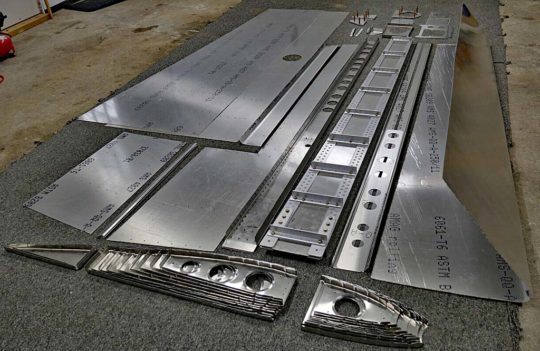 The ScaleBirds team report they offer full-service maintenance and overhauls for the Vernon engines. "We went to the Czech Republic and were trained in the operation and maintenance for these powerplants," Sam clarified.
The five-cylinerVerner Scarlett 5S is a modern radial aviation powerplant. "With specs and performance that put it right next to other 80-horsepower engines, the Scarlett 5S is still lighter than the other direct-drive engine options and without the cost and complexity of the higher-revving redrive engines of similar output," Sam said.
While the design team likes the round Vernors for some applications, "LiteFighters are designed for a variety of available aircraft engines from 65 to 140 horsepower. The in-line fighters like the P40 will be based on the Viking 130, AeroMomentum, and Rotax 912UL, while radial powered models will be geared towards the Verner 5Si or 7U engines," Sam explained. "This will not preclude other popular options such as Continental, VW, Jabiru, and various two-stroke options, the D-motor, as well as other auto conversions such as the Suzuki G engines with redrives."
Video watching is great while America remains sheltered at home. Here is a trio of ScaleBirds videos — two about the P-36 Hawk in recent and earlier states of development plus lots of talk about radial Verner engines, which ScaleBirds imports. Grab some popcorn and enjoy!
The ScaleBirds team report they offer full-service maintenance and overhauls for the Vernon engines. "We went to the Czech Republic and were trained in the operation and maintenance for these powerplants," Sam clarified.
The five-cylinerVerner Scarlett 5S is a modern radial aviation powerplant. "With specs and performance that put it right next to other 80-horsepower engines, the Scarlett 5S is still lighter than the other direct-drive engine options and without the cost and complexity of the higher-revving redrive engines of similar output," Sam said.
While the design team likes the round Vernors for some applications, "LiteFighters are designed for a variety of available aircraft engines from 65 to 140 horsepower. The in-line fighters like the P40 will be based on the Viking 130, AeroMomentum, and Rotax 912UL, while radial powered models will be geared towards the Verner 5Si or 7U engines," Sam explained. "This will not preclude other popular options such as Continental, VW, Jabiru, and various two-stroke options, the D-motor, as well as other auto conversions such as the Suzuki G engines with redrives."
Video watching is great while America remains sheltered at home. Here is a trio of ScaleBirds videos — two about the P-36 Hawk in recent and earlier states of development plus lots of talk about radial Verner engines, which ScaleBirds imports. Grab some popcorn and enjoy!






 I interrupt the ongoing battle with Covid-19 to take you on a nostalgic tour of Oshkosh-19. View this excursion by video below.
Hey, when you can't go to
I interrupt the ongoing battle with Covid-19 to take you on a nostalgic tour of Oshkosh-19. View this excursion by video below.
Hey, when you can't go to  Oshkosh is so sprawling you can't see it all but this post along with the video below tries to capture objects of interest to readers of this website and viewers of Dave's
Oshkosh is so sprawling you can't see it all but this post along with the video below tries to capture objects of interest to readers of this website and viewers of Dave's 




